
Bahrain BD 1.50 Kuwait KD 1.50 Oman OR 1.50, Saudi Arabia SR 12.00 UAE DH 10.00 UK £ 3.00, US $ 3.00 VOLUME 21 ISSUE 4 APRIL 2023 21 YEARS Rs. 50
www.seasonalmagazine.com
Seasonal
Managing Editor
Jason D Pavorattikaran
Editor
John Antony Director (Finance)
Ceena
Associate Editor

Carl Jaison
Senior Editorial Coordinator Jacob Deva
Senior Correspondent
Bina Menon
Creative Visualizer
Bijohns Varghese
Photographer
Anish Aloysious Office Assistant Alby CG
Correspondents
Bombay: Rashmi Prakash
Delhi: Anurag Dixit Director (Technical)
John Antony
Publisher Jason D Pavorattikaran

Editorial & Business Office
Cochin: 36/1924 E, Kaloor-Kadavanthra Road, Near IGNOU, Kaloor, Cochin-17.
Ph:0484- 2345876, 2534377, 2340080 Mob. 09947141362
Delhi: H.No: P-108, Uppal Southend, Sector 48, Sohna Road, Gurgaon, Haryana – 122018
Ph: 9891771857|099471 41362
Mumbai: 202, Woodland Heights Building, St. Martins Road, Bandra West, Mumbai400 050 Mob: 919947141362
Bangalore: House No: 493, Block 3 3rd Main, HBR Layout, Bangalore-4209731984836, Email:skmagazine@gmail.com www.seasonalmagazine.com
UK Office: “CRONAN”, Boundaries Road Feltham, Middlesex, UK TW13 5DR Ph: 020 8890 0045, Mob: 00447947181950 Email: petecarlsons@gmail.com

Reg No: KERENG/2002/6803
IS TECHNOLOGY MAKING US DUMBER?
College essays used to be a benchmark that separated the talented students from the rest of the class. Similar was the case with mathematical problem solving. It was something that calculators or even the usual computer programs couldn’t help a student with. And in recent years, yet another of such benchmarks had emerged, which was writing software programs to solve challenging problems in different domains.
But, in one stroke, ChatGPT and its likes have made it all history. This seemingly revolutionary software system from a startup named OpenAI has stormed the classrooms with the power of artificial intelligence. It can write college level essays that fetch A grades, it can solve complex maths problems, and it can not only write software programs but even debug your programs before you finish reading this sentence.
Its proponents, and much of the tech world, are saying that this technological advancement is not to be feared, but embraced. Their logic is that just like how calculators, personal computers and the internet didn’t destroy education, but only enhanced it, the likes of ChatGPT will only add great value to education.
There are however two major flaws to this argument. The first flaw is whether calculators, computers & the world wide web have really enhanced education. For sure, they have had positive effects, but to ignore their negatives would be grossly untruthful.
The ubiquitous presence of calculators in everything from computers to phones and even smartwatches now, have taken students’ arithmetical skills to abysmally low levels like it has never happened in modern human history. Doing mental maths is not only joyous, but it gives a powerful conceptual framework about how numbers in different proportions can be made to work together to reveal the meaning of various operations in real world settings.
When it comes to computers and the internet, some may think it is more difficult to find the negatives, but this is absolutely not true. For one, they have redefined - for the worse - what is truth. Truth has forever been tinted with subjective opinions masquerading as information. What is the source for truth today? Google
Subscriptions Available on iPhone/iPad & Android All health related articles are for first information purposes only. Always consult your doctor before taking any decison affecting your health.
MAGAZINE
Printed & Published by Jaison D on behalf of PeteCarlson Solutions Pvt. Ltd. at Cochin. Printed at Rathna Offset Printers, Chennai-14. All Rights Reserved by PeteCarlson Solutions Pvt. Ltd. No part of this publication may be reproduced by any means, including electronic, without the prior written permission of the publisher. MEMBER SEASONAL MAGAZINE / 1 March 2023 EDITORIAL 1 March 2023 / Wednesday / Pages-108 2
Sam Altman
it? Or read its Wikipedia entry? Anyone who knows the basics of digital tech realizes that such things can be gamed.
So the first fallacy to counter is that calculators, computers and the internet were choke full of positives, with no negatives involved. It can be clearly seen that while they have made humanity more productive, it was at the cost of making it dumber. People today have no passion or energy to find out the truth from real world encounters, but just take the easy way out of parroting the digital version of truth that is readily available at a click.
However, the second reason why the likes of ChatGPT will not end up only adding value to education, but will have serious negative impacts too, has got to do with how critically different this innovation is compared with earlier ones like calculators, computers or the internet.
But to understand that we have to first understand how ChatGPT works. Though it is touted as a piece of true artificial intelligence, in reality it is only a kind of machine learning system called Large Language Model (LLM). A rudimentary model of such a system is the auto-complete seen in email and chat editors, in which based on your earlier responses (as well as other similar responses from other people) the system guesses a probable set of suggestions from which you can choose from.
LLMs take this core idea to an exponential level, by training the system on a massive amount of data, like the internet, publicly available books, news, periodicals, public chats, forum discussions, social media, published research studies, code repositories and the likes to detect millions of patterns about how pieces of information correlate to each other, and even more importantly how human beings communicate about such data.
So, what are the pitfalls about using such a system in education?
One is the truthfulness of its output, or more precisely the lack of absolute truthfulness of the text it generates. Just like how its sources like websites, user edited encyclopaedias like Wikipedia, public books, partisan news outlets etc have false information, ChatGPT’s output will also be seriously imperfect, and therefore especially unsuitable for academic rigour. But the real issue with ChatGPT is not this lack of absolute truth, but the fact that it presents this imperfect output as the perfect truth using human-like language constructs that make the text
very much plausible and persuasive.
Renowned researchers in AI like Arvind Narayanan of Princeton have called out ChatGPT for this kind of dishonest behaviour, and have boldly stated that it is an example of a bullshitter program, based on what bullshitting is, in an academic perspective, which is pushing partial truths or subjective opinions as the absolute truth.

There are even greater dangers for the society from such LLMs like ChatGPT according to the ace computational linguist Emily Bender of University of Washington, which she says is unnecessarily and dangerously mimicking human behaviour - with false or unreal emotions - for its mass appeal. She has called out LLMs as stochastic (probable but never precise) parrots and has decried efforts by OpenAI CEO Sam Altman to pull down humanity to the level of stochastic parrots for the glorification of their ChatGPT product.
Another critical view of LLMs like ChatGPT, Microsoft Bing Chat, Google Bard etc has been about how these tech firms are seeking monopolistic and rent-seeking behaviour from the enormous software expertise and computing power they have amassed to gobble up all the public data without permission or regard for copyright, and then profiteering from it on a massive scale. Indeed, the swift rise of OpenAI to a $29 billion startup on the back of paid monthly subscriptions should be an eye opener for everyone.
Apart from its lack of truthfulness, mimicking of humanity, false or unreal emotions, and rent-seeking behaviour on public, proprietary or copyrighted data, the most disturbing facet of LLMs like ChatGPT is how much more dumber it will make our students and eventually humanity as a whole.

If calculators killed mental maths, and computers & internet killed real life learning through observation & experience, the likes of ChatGPT are destined to dumb down things to even deeper levels by offering ready-made essays, machine solved maths theorems and machine debugged code that will invariably result in a lack of analytical, critical and problem solving skills in our young generations, which we increasingly need for solving humanity’s emerging problems.
John Antony
SEASONAL MAGAZINE / 1 March 2023 101
Emily M. Bender
Aravind Narayanan


CONTENTS
UP CM YOGI ADITYANATH ENTERS 7th YEAR OF STELLAR LEADERSHIP
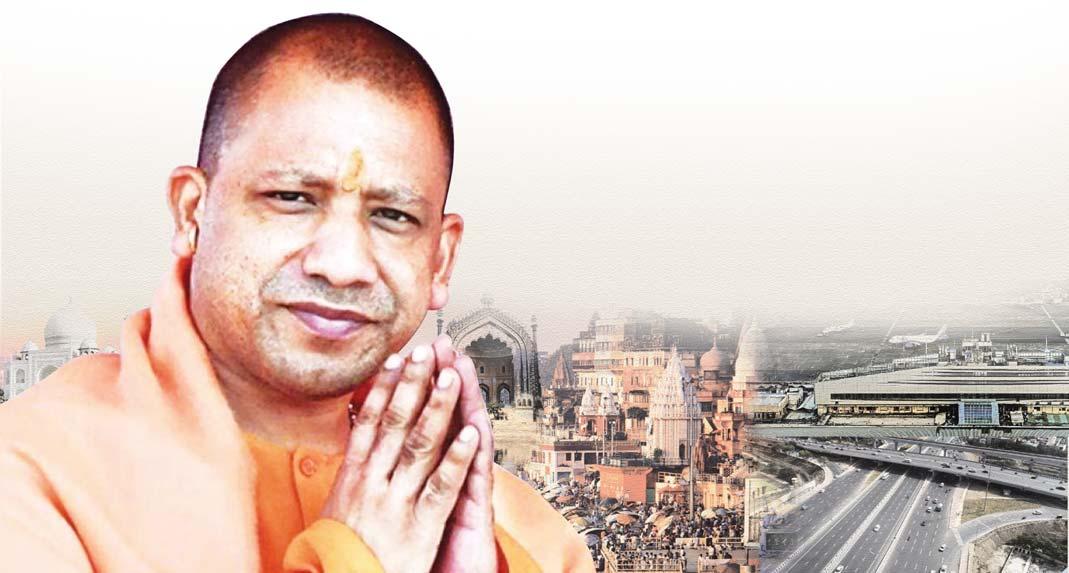
India’s most populous state of Uttar Pradesh has completed six years under the leadership of Chief Minister Yogi Adityanath, and the state has grown leaps and bounds in various sectors including investments, infrastructure, agriculture, tourism, socio-economic development, law and order, quality assurance and ease of doing business. This transformation was obvious to the world during the recently concluded Global Investors Summit 2023, which attained a record of over Rs. 33 lakh crore worth of investment MoUs, but even in his 7th year, CM Yogi has no plans to slow down, and is gunning to make UP a $1 trillion economy by 2027, before the state goes for its next polls.
THE LONE WOMAN WARNING AGAINST CHATGPT AND LARGE LANGUAGE MODELS

You are not a parrot like ChatGPT, and a chatbot like that is not a human. And a linguist named Emily M. Bender is very worried what will happen when we forget this.
HOW LONG SHOULD BE YOUR DAILY HEALTH WALK?

How long do you need to walk to reap the health benefits? 11 minutes may be enough to extend your life. New research from the University of Cambridge suggests that an 11-minute brisk walk every day could prevent early deaths significantly.
MP EMERGING AS MOST SOUGHT AFTER “INVESTMENT DESTINATION POST GIS 2023
With the Global Investors Summit 2023 proving to be a major success by way of global participation and solid investment proposals, Chief Minister Shivraj Singh Chouhan is leading the Madhya Pradesh Government from the frontline in facilitating the implementation of the various investment proposals received during the summit and in the run-up to it.
PROOF THAT HUMANS WERE MORE INNOVATIVE 2000 YEARS BACK

Scientists learn surprising secrets of making concrete that lasts thousands of years from Rome's Pantheon. MIT experts have uncovered the Roman recipe for self-repairing cement which could massively reduce the carbon footprint of the material today.

SEASONAL MAGAZINE 6
HOW YOUR BRAIN IS HELPING YOU HEAL

New research shows that dedicated neurons in your brain are responsible for the physical sickness symptoms and help us fight off disease and infection. So next time you feel sick, you can thank your brain – it’s helping you heal.
HOW GOOD ARE AIR FRYERS FOR YOUR FAMILY'S HEALTH?

Many people think that air fryers are either gimmicky or the same as a standard, convection oven. However, we think both of these views are untrue.
INSIDE THE LAST-MINUTE MINDSET
ODISHA'S LEADER IN PLACEMENTS

With 100% campus placements for all interested students, Kalinga Institute of Industrial Technology (KIIT) is giving Odisha students no reason to leave the state for higher studies.

TRUE INTERNATIONAL SCHOOLING FINALLY ARRIVES IN KOCHI
Cochin International School has opened its doors recently for students to experience IB & Cambridge schooling in the city, with premium features including over 2 lakh sq ft of built-up area,
ARTIFICIAL INTELLIGENCE
IS EVERYTHING IN PHYSICS COMPLETELY MADE UP?

Yes, everything in physics is completely made up, admits theoretical astrophysicist Dr Katie Mack, but argues that that’s the whole point! Dr Katie Mack is a theoretical astrophysicist
KARUNYA’S CREDENTIALS AS A WORLD CLASS UNIVERSITY
When Stanford University selected the world’s top 2% of scientists, four were Karunya professors! Like world-class universities, Karunya has also set up 25 Technology Missions backed by interdisciplinary teams.
Why do we often feel motivated only when a deadline is looming? Are you a hardened procrastinator who’s addicted to the rush of doing things last minute? You’re not the only one – but what are the root causes, and is this really the most efficient way to behave?

KARNATAKA PUSHES FOR MASSIVE DEVELOPMENT UNDER CM BOMMAI

Chief Minister Basavaraj Bommai is leading Karnataka into a new phase of massive economic development, with definitive plans to come back to power in the assembly polls planned for April-
PURVA BACK ON A RAPID GROWTH TRACK
Bengaluru headquartered real estate development major Puravankara Group has had several firsts to its credit in its chequered history since its inception in 1975. Starting from the first ever multi-storey project in Bengaluru, Founder & Chairman Ravi Puravankara led the group’s flagship firm..

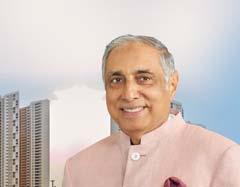

One of the many recent mysteries is why hundreds of extremely intelligent and rich people think that a moratorium on further development of artificial intelligence is feasible, or that a ..

VIVEK RAMASWAMY: THE INDIAN AMERICAN CEO WHO WANTS TO BE THE US PRESIDENT

Two of the three Republicans who have announced plans so far to enter the US presidential race are Indian-Americans. While Nikki Haley is a familiar name, surprise candidate Vivek Ramaswamy is much less well known. Californiabased journalist Savita Patel
LEADERSHIP IN HEALTHCARE PLACEMENTS
JSSAHER is a de facto leader in placements into Indian and MNC pharmaceutical companies, Ayurvedic manufacturers, biotech companies, and leading hospitals across the country..
PROSPECTS UP FOR PRESTIGE AS HEADWINDS TURN TO TAILWINDS

What sets apart a leader in any sector is how it performs during downturns rather than in good times. The first three quarters of this fiscal delivered serious headwinds for the entire real estate sector, as it witnessed..
TOP 10 GMAIL POWER TIPS
Stay on top of your Gmail inbox with these must-have tips and tricks that will turn you into an email pro..

SEASONAL MAGAZINE 7

SEASONAL MAGAZINE 8 COVER STORY
UP CM YOGI ADITYANATH ENTERS 7th YEAR OF STELLAR LEADERSHIP UP CM YOGI ADITYANATH ENTERS 7th YEAR OF STELLAR LEADERSHIP
INDIA’S MOST POPULOUS STATE OF UTTAR PRADESH HAS COMPLETED SIX YEARS UNDER THE LEADERSHIP OF CHIEF MINISTER YOGI ADITYANATH, AND THE STATE HAS GROWN LEAPS AND BOUNDS IN VARIOUS SECTORS INCLUDING INVESTMENTS, INFRASTRUCTURE, AGRICULTURE, TOURISM, SOCIO-ECONOMIC DEVELOPMENT, LAW AND ORDER, QUALITY ASSURANCE AND EASE OF DOING BUSINESS. THIS TRANSFORMATION WAS OBVIOUS TO THE WORLD DURING THE RECENTLY CONCLUDED GLOBAL INVESTORS SUMMIT 2023, WHICH ATTAINED A RECORD OF OVER RS. 33 LAKH CRORE WORTH OF INVESTMENT MOUS, BUT EVEN IN HIS 7th YEAR, CM YOGI HAS NO PLANS TO SLOW DOWN, AND IS GUNNING TO MAKE UP A $1 TRILLION ECONOMY BY 2027, BEFORE THE STATE GOES FOR ITS NEXT POLLS.

SEASONAL MAGAZINE 9
How Uttar Pradesh Chief Minister Yogi Adityanath is engaging with major developed nations across the world is something that many CMs across India can learn from. His diplomatic savvy was recently visible when he engaged directly and deeply with a group of South Korean pilgrims who were visiting Uttar Pradesh to commemorate a special occasion.
India and South Korea recently completed the half-centenary of their diplomatic ties, and to mark this, a group of 108 Buddhist pilgrims from the Republic of Korea walked over 1,100 km over 43 days, visiting key Buddhist sites in UP and as well as in other part of India, as part of a walking pilgrimage being organized by the Sangwol Society of South Korea. The pilgrimage aimed to further increase the friendship and collaboration between the two countries.
South Korea is a key trading partner for India, with the mutual trade between the two countries being $28 billion now, of which India exports goods worth $9 billion to South Korea, and imports goods worth $19 billion from the Asian major. Uttar Pradesh is also a key beneficiary in the mutual trade and investment between both nations, as in 2018, a mobile phone manufacturing unit of Korean giant Samsung Electronics was commissioned in UP’s Gautam Buddha Nagar.
As Yogi Adityanath completes six consecutive years as Chief Ministerwhich is a first in UP - such savvy engagements with developed nations and giant MNCs have become a hallmark of his leadership style. The recently concluded Global Investors’ Summit in Lucknow captured this perfectly as it went on to ink investment MOUs to the tune of more than Rs 33 lakh crore, which created a new record in India.
With only one year gone from his second five-year term as UP Chief Minister, Yogi Adityanath’s ambition is to lead and propel Uttar Pradesh to be a one trillion dollar economy by 2027, when the state would again be going for the polls. While it is still a very ambitious target, for those who know CM Yogi up close, it seems achievable, especially as he has the full backing of Prime Minister Narendra Modi in this pursuit.
Recently, under the leadership of CM Yogi Adityanath, the state took the pioneering step of establishing Uttar Pradesh Gunvatta Sankalp (Uttar Pradesh Quality Mission) in collaboration with the Quality Council of India (QCI). With this step, Uttar Pradesh has become the first state in India to facilitate a state-level mission by QCI, and this step has been taken with the explicit objective of using quality as a growth enabler to be a 1 trillion economy by 2027.
The Quality Council of India, established in 1997 by the Government of India and the Indian
industry, is the apex organisation in India responsible for establishing and operating an independent national accreditation system, for improving the quality across sectors and for providing consulting services to the government and other stakeholders on all matters concerning quality.
QCI’s strategy has been an all encompassing one, and not merely on industrial quality. It resonates well with Uttar Pradesh government’s drive for higher quality through leveraging the services across sectors like education, health, MSMEs, and skilling. Indeed, industry associations including ASSOCHAM, FICCI, IIA and PHDCCI are collaborating with the establishment of the Uttar Pradesh Gunvatta Sankalp in Lucknow.
QCI’s National Board for Quality Promotion is responsible for running the national quality campaign. QCI has also constituted independent Boards in different sectors that offer accreditation in their respective areas – examples being NABL for labs, NABH for hospitals, NABCB for certification and inspection bodies, and NABET for education and training. All concerned institutions in UP, across such sectors, will now get a headstart in improving their quality for attaining these coveted certifications.
The pioneering step of establishing the Uttar Pradesh Gunvatta Sankalp is also ushering in a new era of development for the state in which, it moves from being an ‘Aatmanirbhar’ (self-sufficient) Uttar Pradesh to a ‘Daata’ (provider) Uttar Pradesh that will serve the nation from its bounties. Indeed, PM Modi himself had signalled this change when he hailed the recent UP GIS 2023 as a major step forward in the entire nation’s growth story and not just of UP.
At the same time, Chief Minister Yogi Adityanath is acutely aware of the relatively backward areas in the state, and has unleashed a program on war footing to make 100 such aspirational blocks & districts Aatmanirbhar. Special works are being undertaken

SEASONAL MAGAZINE 10
to better 75 socio economic indicators in these blocks and districts.
Apart from the nodal officer, other key functionaries, BC Sakhis, Gram Sanchivalayas etc, the CM has appointed specially selected CM Fellows for implementation of these schemes in these aspirational districts and blocks. Special resource pools called Amrit Sarovars are also being created across the state, as well as a digital dashboard for recording and monitoring the progress of these programs.
While Uttar Pradesh will always have a challenging task in employing all its job seekers, being the most populous state in India, under CM Yogi’s rule, much headway has been made in this regard. The government has given jobs to over 5.5 lakh youngsters in the last six years, even while ensuring fairness and transparency in these recruitments. Under Chief Minister’s directive, a novel training program for aspiring officer candidates for Uttar Pradesh Public Service Commission had been set up earlier. Named Mukhyamantri Abhyudaya Coaching Scheme, it has become a rapid success with 43 of its candidates clearing the PSC test for recruiting 496 officers across the state. Private sector hiring has also been on a healthy upward spiral in the state, as it makes steady progress in bettering the business environment and in attracting investments. However, the UP government has been equally keen on growing entrepreneurship in the state. Under this scheme, over 60 lakh young entrepreneurs were extended support to build their start-ups.
Among these, 8,714 units are the bigger or formally registered startups in the state. The state IT department, has been designated as the nodal agency for startups, and is providing financial assistance of up to Rs 7.5 lakh to these registered startups. In addition to this, the UP government also provides Rs 17,500 as monthly sustenance allowance to them.
Interestingly, among these 8714
registered ventures, 4305 startups or nearly 50% of these new ventures, are by women entrepreneurs. The state IT department provides an extra 50% in financial assistance to women entrepreneurs, and this has been a top reason why so many women have come forward to launch their startups in the state. Women MSMEs need not pay stamp duty too in the state, as per a new government directive.
Towards improving the social and business environment in the state, CM Yogi Adityanath had adopted a zero tolerance policy towards organized crime and mafia in the state. More than 12,513 criminals were booked under the Gangsters Act and 126 top criminals were slapped with NSA, which has resulted in the state witnessing not even a single riot for around one year now.

During the first year of his second term which is now completed, CM Yogi directed the establishment of a new task force and three new police commissionerates for bettering the law & order situation. The new Anti Narcotics Task Force (ANTF) has been taking the drug mafia head on, and the new police commissionerates at Prayagraj, Ghaziabad & Agra have helped in reducing the average
response time for distress calls. Agriculture still being a great pillar of the Uttar Pradesh economy, the government is closely following all the emerging needs of the farmers. In one such swift action recently, the government directed the insurance companies to compensate the insured farmers who had sustained crop damage from the recent rains and thunderstorms in the state.
Optimizing agriculture for UP’s seasons and soil types has been another priority for the UP government. Towards this, the Yogi government has created a new Rs. 15.31 crore grant for expanding the coverage of Zaid crops. And in accordance with 2023 being the International Year of the Millets, the cultivation of these native and healthy grains are also being promoted.
Improving its Zaid crops is a priority for UP, as currently only 9% of the agricultural area is utilized for it. Zaid is a short season during the summer months between the rabi and the kharif seasons (March to June), where important Zaid crops including rice, watermelon, muskmelon, cucumber, vegetables, corn, pepper, tomato, coarse seeds
SEASONAL MAGAZINE 11
and fodder crops can be grown.
Uttar Pradesh which is India’s second largest producer of paddy, has also plans to reduce this by 17% and reallocate such lands for the cultivation of millets & oilseeds. The state can afford to do so as it has 60 lakh hectares of paddy under cultivation across 70 districts that produce a formidable output of 15 million metric tons of rice each year.
The state, which is also the second largest producer of millets in the country, has strategized this as a sound move, as paddy is heavily dependent on rains, while millets are not. And during last year, UP had received 42% less rains, sending many paddy farmers into distress. The state is also implementing an ambitious plan to move up the value chain in paddy, by focusing more on the exotic varieties of rice that fetch sharply higher returns.
Uttar Pradesh is also getting modernized at a fast pace. The infrastructure and transportation sector of the state is turning state-ofthe-art. The state is soon to become the only state in India to have 5 international airports. While three international airports are already functional in the state, two new international airports are under construction at Jewar and Ayodhya.

Including these, the UP government is working on increasing the total number of operational airports from the current figure of 9 to as many as 21. During the tenure of the Yogi
government, construction work of four airports has been completed so far and the work on six new airports at Aligarh, Azamgarh, Moradabad, Shravasti, Chitrakoot and Sonbhadra are nearing completion.
The state, which recently had its annual budget for the financial year 2023-24, is putting special thrust also to enhance the rail and ropeway connectivity in the state. Priority has
been given to India`s first ropeway project for public transportation in Varanasi. The budget also includes a provision of more than 2500 crores for the development of metro rail service in the four metropolitan cities of UP.
Apart from these, the UP government has earmarked Rs 1306 crore in the budget for the Delhi-GhaziabadMeerut Corridor’s Regional Rapid Transit System project. Another mega infra project that the state is investing in is the Chief Minister`s Urban Expansion and New City Promotion Scheme which has been allocated Rs 3000 crore in this budget. Altogether, Rs. 55,000 crore has been earmarked for the road, rail and metro sectors.
On the tourism front too, Uttar Pradesh is witnessing a major upswing as was witnessed in the GIS 2023. Japanese hospitality major HMI Group will be building 30 hotels in 30 cities of UP at an estimated investment of Rs. 7200 crore.


SEASONAL MAGAZINE 12

PROOF THAT HUMANS WERE MORE INNOVATIVE 2000 YEARS BACK
PROOF THAT HUMANS WERE MORE INNOVATIVE 2000 YEARS BACK
SCIENTISTS LEARN SURPRISING SECRETS OF MAKING CONCRETE THAT LASTS THOUSANDS OF YEARS FROM ROME'S PANTHEON. MIT EXPERTS HAVE UNCOVERED THE ROMAN RECIPE FOR SELF-REPAIRING CEMENT — WHICH COULD MASSIVELY REDUCE THE CARBON FOOTPRINT OF THE MATERIAL TODAY.
ome’s Pantheon stands defiant 2,000 years after it was built, its marble floors sheltered under the world’s largest unreinforced concrete dome. For decades, researchers have probed samples from Roman concrete structures—tombs, breakwaters, aqueducts, and wharves—to find out why these ancient buildings endure when modern concrete may crumble after only a few decades.
In a recent study, scientists have got closer to the answer—and their findings could reverberate long into the future. Not only is Roman concrete exponentially more durable than modern concrete, but it can also repair itself. Creating a modern equivalent that lasts longer than existing materials could reduce climate emissions and become a key component of resilient infrastructure, like seawalls. Currently, concrete is second only to water as the world’s most consumed material, and making it accounts for about 7 percent of global emissions.
“We are dealing with extremely complex material,” says Admir Masic, a researcher at the Massachusetts Institute of Technology who led this new research on Roman concrete. “To kind of reverseengineer or understand the original way these civilizations made this material is just a nightmare.”

Until now, efforts to explain the longevity of Roman concrete have pointed to its

use of volcanic tephra—the fragments of rock emitted in an eruption—mined in the Naples area and shipped to construction sites throughout the sprawling Roman empire. But Masic and his MIT colleagues, along with researchers from Harvard and laboratories in Italy and Switzerland, suggest another reason: heat. Using a number of different scanning techniques, they examined a sample from a city wall in Privernum, a 2,000-year-old archaeological site near Rome, focusing on millimeter-scale white chunks running through the sample, called lime clasts. These are not found in modern concrete.
“Every wall made out of Roman concrete will have these inclusions,” Masic says, who in the past has looked at structures across Israel, North Africa, Italy, France, and Spain. Previously the lime clasts were thought to be a product of not mixing the concrete properly, Masic explains. But the team’s scanning revealed that the clasts were formed at extremely high temperatures, and are made from various forms of calcium
“WE ARE DEALING WITH EXTREMELY COMPLEX MATERIAL,” SAYS ADMIR MASIC, A RESEARCHER AT THE MASSACHUSETTS INSTITUTE OF TECHNOLOGY WHO LED THIS NEW RESEARCH ON ROMAN CONCRETE. “
carbonate. They contain a kind of calcium that Masic’s team theorized could heal cracks by reacting with water, creating a solution that recrystallizes in fissures to fill them in. That calcium, he says, could be the “missing link” explaining the material’s durability.
The question, then, was where the necessary heat came from to make those clasts. It had been thought that Roman concrete was created by combining water with a calcium compound called slaked lime. But what if the Romans used lime in a more reactive form, called quicklime, Masic wondered. When mixed with water, quicklime reacts and produces heat.
To test the theory, his team created concrete both with and without quicklime. They then cracked the blocks they had created and ran water through the fissures. Only the cracks in the concrete made with quicklime closed up—they had found the recipe for the self-repairing material.
Patents have now been secured by MIT. Masic says a company will begin producing what he calls Roman-inspired concrete by year’s end. “Translating this knowledge of the ancient world into modern applications, I think that’s the next step,” he says. “These cracks are healed in two to three weeks using ingredients that are readily available and, most importantly, cheap.”
Masic’s paper is the latest in a string of
SEASONAL MAGAZINE 14 INNOVATION
investigations into Roman concrete. Last year, he published research with Marie Jackson, a researcher at the University of Utah, that examined the 70-foot-tall tomb of first-century Roman noblewoman Caecilia Metella on the Appian Way, an ancient Roman road that runs across Italy. Their investigation revealed that the particular formation of Roman concrete used in the tomb interacts with rainwater and groundwater, becoming more resilient over time.
And in earlier work, Jackson and her colleagues produced an exact replica of a similar concrete, used 1,900 years ago to build the Markets of Trajan in Rome, and developed an innovative fracture test to better measure its resilience, showing that it is far less brittle than modern concrete. Jackson also studied cores drilled from concrete in Roman harbors, determining that seawater moving through the concrete reacts with it to create new minerals that make the concrete more cohesive and resilient over time.

Jackson has some concerns about Masic’s new paper, however. The sample it analyzed is undated, and it
contains sand instead of the volcanic tephra typically used—the sample therefore isn’t representative of Roman concrete, she says. In response, Masic says his team plans to analyze other sites “to confirm our hypothesis” that the Romans used quicklime in their concrete recipe—known as hot mixing. Masic’s team also wants to look in more detail at the influence hot mixing had on how the Romans built their structures.
So has Masic actually solved the mystery of how Roman concrete was made? “Who knows?” he says. “What I do know is we were able to translate some of these concepts into the real world. That’s what really excites me the most.” There’s the potential now to build better concrete, regardless of whether it is strictly “Roman” or not.
This recipe and process were lost over a millennium ago. No similar concrete existed until Joseph Aspdin of Great Britain took out a patent in 1824 for a material produced from a mixture of limestone and clay. He called it Portland cement because it resembled Portland stone, a limestone used for building in England.
Modern concrete is made from fragments
of rock combined with Portland cement—a mixture of limestone, clay or shale, and other ingredients ground and burned at 1,450 degrees Celsius (2,642 degrees Fahrenheit). That process creates an enormous amount of greenhouse gas and leaves you with concrete that’s not durable, degrading sometimes in as little as 50 years, especially in marine environments. Roman concrete, in comparison, is strong, requiring no steel reinforcing it, unlike its modern counterpart. And it’s relatively cheap.
Concrete infrastructure today, such as roads, cost six to 10 times their initial price when factoring in repairs over their lifespan, says Joseph King, who recently left his position as a program director at the Department of Energy’s Advanced Research Projects Agency–Energy (ARPA-e), where he created and ran the cement program. So extending the life of concrete made today, even by just a few times its life expectancy, would dramatically reduce demand and lower greenhouse emissions. “When you lay a new freeway, a pothole shows up every three years,” King says. “If you now only have to fill your potholes every 10 years or 20 years, it’s a better material.” Having concrete that survives for 2,000 years isn’t necessary to make a big difference.
On this front, Masic’s and Jackson’s labs are working with entrepreneurs interested in bringing their versions of Roman concrete to market. Jackson’s team, for instance, has collaborated with an industry partner to create a synthetic version of the volcanic tephra the Romans mined, because of the tremendous volume that will be needed.
After years and years of pursuing an answer, Jackson is happy the quest is generating interest. “What’s really important and valuable is that the topic of Roman concrete is now in the media,” she says. “This is an incredibly sophisticated and complex material. The people who made it were so brilliant, and so precise in what they did, that it has taken us 15 years of work to decipher much of this. And we are humbled by how much more we have to learn.”
(Credit: Jim Morrison for Wired)
SEASONAL MAGAZINE 15
INSIDE THE LAST-MINUTE MINDSET
WHY DO WE OFTEN FEEL MOTIVATED ONLY WHEN A DEADLINE IS LOOMING? ARE YOU A HARDENED PROCRASTINATOR WHO’S ADDICTED TO THE RUSH OF DOING THINGS LAST MINUTE? YOU’RE NOT THE ONLY ONE – BUT WHAT ARE THE ROOT CAUSES, AND IS THIS REALLY THE MOST EFFICIENT WAY TO BEHAVE?
henever I want to send myself into the throes of an existential crisis, I start to think about how much time I waste each year not doing the tasks on my to-do list. If I added it up, how many hours, days or possibly even weeks do I spend procrastinating, putting things off and thinking about all of my looming responsibilities without ever springing into action? And what, in some perfect parallel universe, could the dedicated, focused version of me have achieved with all that time? Trained for a marathon? Finally finished Middlemarch? Written a Middlemarchsized novel of my own?
My last-minute mindset is something I’m well aware of, and yet whenever I’m presented with a deadline, I follow the same pattern: put the work off for as long as humanly possible, then cram it all into a condensed, chaotic period of ’productivity’, which often involves working late into the evening. Even if I make time, say, in the week coming up to the cut-off point to focus on getting this task done, I inevitably waste it. I manage to re-discover a boy band from 2002. I comb through the IMDb page for a random character actor I spotted in the background of a TV show the previous night. You get the picture.
I’m not the only one. A 2007 study published in Psychological Bulletin found that 15-20% of people chronically procrastinate, with 25% describing this as their dominant personality trait. And it doesn’t have to be confined to a work context; as Christmas approaches, many of us will once again come face to face
with our last-minute tendencies when we end up doing all of our present shopping in a panicked 24th December dash. So, why do so many people only feel motivated when a deadline is hanging over them?
“Deadlines work because they put just enough psychological stress onto us to motivate us into taking action and give a sense of urgency,” says positive psychologist Niyc Pidgeon. “As the deadline approaches, the completion of the task becomes more urgent and more important, which raises the priority of getting it done.” This can, she says, help us “to make better decisions when it comes to what to focus on”.
There are thought to be two main types of procrastination. Active procrastination is all about using the pressure of a nearing deadline to motivate yourself

and push yourself on, explains counsellor Juulia Karlstedt. “When we actively procrastinate, we are usually experiencing some lack of motivation about the task we need to complete,” she says. “Maybe it is difficult, timeconsuming or brings up uncomfortable thoughts or feelings. By avoiding the task until the last minute, we can push this discomfort down the line while simultaneously tapping into the most primal motivator of all: fear and anxiety.”
“The closer the deadline gets, the more adrenaline we build up internally to push us over the finish line and it can work great to help us get stuff done,” she adds. The flip side to this, though, is passive procrastination, when we “freeze up and feel unable to engage with the task at hand.
“All of the responses tied to

MINDSET SEASONAL MAGAZINE 16
procrastination are connected to our survival responses,” she adds. “In other words, we will either flee, fight or freeze if we use fear as a motivator, and since this is an automatic survival process, we don’t get to choose which one our body uses.”
Managing to sweep in at the last minute and press send moments before a deadline can give us an “adrenaline buzz”, notes psychologist Wendy Dignan, which we’re unlikely to experience if we “take small chunks out of [a project] and just chip away at it”. It’s that buzz – that ‘by the seat of our pants’ feeling – that can make this behaviour so hard to stop.
We might tell ourselves that we function best under stress, then reaffirm that belief by looking back at all the times we’ve managed to pull it off, finding evidence for this ‘last-minute dot com’ coping strategy, Dignan says. “So in that way, [we can] get stuck in this horrible loop… The more you [do this] as a coping mechanism, the less able you are to back away from it. You practice firing those same neurons down those same pathways, and it takes a big leap of faith to do it differently.”
Plus, even if you think you’ve got active procrastination nailed, the long-term exposure to anxiety and stress could mean you “switch to passive procrastination”, adds Karlstedt. “Instead of feeling a rush of adrenaline as [you] get closer to a deadline, [you] feel paralysed and frozen.”
There are certain personality traits that might mean you are more susceptible to procrastination. “You are more likely to procrastinate as a means of motivation and self-regulation and self-regulation if you struggle with anxiety, self-criticism, [and] perfectionism,” Karlstedt explains. “Since high achievers struggle with many
of [those] things listed, they are also often more likely to procrastinate because of the high expectations they place on themselves.”
Low self-esteem could also be a root cause, says Dignan. If you don’t feel good enough, you likely fear failure, and the only reason you find to get round to doing things becomes “the consequence of not doing the things” (which might exceed that fear of failure).
“It’s always the fear of the worst,” she adds. “It gets to the point of which is the worst thing to lose?”
So, how can hardened last-minute scramblers find a way to break out of this cycle, and is there any way of turning these tendencies into a positive? In the short term, Dignan suggests trying out the ‘two-minute strategy’. “If you can do something in two minutes, you’ve got to do it now.” Another tactic she often recommends to clients involves the humble egg-timer.
If they realise that they’re procrastinating, they have to flip the egg timer up and do whatever it is they’re putting off until the timer runs out, and then they can step away from it, she says. “What often happens is that [after] starting to do something for five minutes, they end up finishing it. It just helps them to get past the fear.”
Realistically, you’re unlikely to cut out your procrastinating tendencies completely, so learning how to work with them and harness them is an important step. Karlstedt recommends “mindfully recognising that you are engaging in avoidance” by considering the benefits it might give you along with the potential costs further down the line.
Learning to think of the task as a process in itself, rather than something to just be ticked off, could have major benefits too.
“Creating a balance between the internal motivation to enjoy the process and find meaning within the project you’re working on, and the outer motivation of meeting the deadline can help,” says Pidgeon. “In positive psychology, we call this choosing a growth mindset, which is focused on the journey – not just the outcome itself.”
(By Katie Rosseinsky for Stylist)
META LAUNCHES TOOL TO REMOVE EXPLICIT IMAGES OF MINORS IN INDIA
Meta launched its 'Take It Down' tool in India to remove intimate and non-consensual images of minors. The tool can also be used by adults to remove explicit photos and videos taken before they were 18. The tool assigns a unique digital fingerprint which turns images or videos into a coded form that can no longer be viewed.

SCIENTISTS DISCOVER HIDDEN CHAPTER IN BIBLE USING UV LIGHT STUDY
Scientists have discovered a lost chapter of the Bible, hidden underneath three layers of text, using ultraviolet photography. According to the researchers, this chapter is an interpretation of Matthew 12, originally translated as part of the Old Syriac version about 1,500 years back. The text is the only remnant of the fourth manuscript of Old Syriac translation.

NSE INDICES ROLL OUT INDIA'S FIRST-EVER REITS, INVITS INDICES
NSE Indices launched India's first-ever Real Estate Investment Trusts (REITs) and Infrastructure Investment Trusts (InvITs) Index - Nifty REITs & InvITs Index. REITs are investment trusts that own and operate realty properties generating regular income and capital appreciation. InvITs are like mutual funds that pool money from investors that own and operate operational infrastructure assets.

SEASONAL MAGAZINE 17
DEADLINES WORK BECAUSE THEY PUT JUST ENOUGH PSYCHOLOGICAL STRESS ONTO US TO MOTIVATE US INTO TAKING ACTION AND GIVE A SENSE OF URGENCY,” SAYS POSITIVE PSYCHOLOGIST NIYC PIDGEON.
TOP 10 GMAIL POWER TIPS

STAY ON TOP OF YOUR GMAIL INBOX WITH THESE MUST-HAVE TIPS AND TRICKS THAT WILL TURN YOU INTO AN EMAIL PRO.
exting has likely alleviated some of your email traffic, but I'd wager your email inbox is still like mine -- a bit chaotic and disorderly. If you use Gmail daily on a computer for work or personal use, are you making the most of Google's free email client? Gmail has a host of features that can help you better manage the constant flow of messages to and from your inbox. Here are the 10 tips that I have found most helpful in keeping on top of my email correspondence. You may already be using some of these, but hopefully you'll find a few here that you can work into your routine to help manage the constant flow of messages to and from your Gmail inbox.
1. MUTE ANNOYINGLY NOISY EMAIL THREADS

Getting stuck on a group email thread can be as annoying on a laptop as a group text on your phone. You've got enough distractions during the workday that you certainly don't need to see a group email continually calling out to you at the top of your inbox as new replies arrive. If you have an active group email and no longer care to follow the back-and-forth chatter, you can opt out. Open the thread, click the triple-dot button at the top and click Mute. The conversation will be moved to your archive, where it will remain even when more replies arrive. If you later get curious about what you missed, you can always find it in the All Mail view of Gmail, which includes your archived messages. You can then unmute the conversation if you so choose by opening the conversation and clicking the X button next to the Mute label at the top of the page. Once unmuted, the next time you receive a reply, it will show up at the top of your inbox.
2. BLOCK UNWANTED MESSAGES
One step further than muting a message is blocking the sender. If you are getting needless and unwanted emails from someone, you can reroute their messages from your inbox directly to the spam folder. Open up a message from the unwanted sender, click the triple-dot button in the upper-right corner and select Block [Username].
3. SNOOZE SO YOU DON'T FORGET
Just like the snooze button on your alarm that you smash when you aren't ready to get out of bed, Gmail has a snooze button for messages you aren't ready to respond to but don't want to lose track of in your inbox. Hover over a message in your inbox and click the little clock button on the right and pick a later time and date - later today, tomorrow, next
week or a specific time you set - for it to appear back at the top of your inbox.
4. SCHEDULE MESSAGES TO SEND LATER
With the popularity of remote work, it's likely you work with people in various locations and time zones. Instead of an email that will disrupt someone's evening or early morning, you can easily schedule your message to be sent at a later time. To do so, click the little downarrow next to the Send button at the bottom of the compose window and click Schedule send. You'll be able to pick a time in the future for your missive to arrive. You can keep tabs on your scheduled emails in the Scheduled folder under the Sent folder - it gets created once you schedule your first email.
5. ENABLE AUTO-ADVANCE
I spend a large chunk at the beginning and end of each workday deleting
SOCIAL MEDIA SEASONAL MAGAZINE 18
unwanted emails. I prefer to open most emails before deleting them so I can take at least a quick glance before discarding them. By default, Gmail sends you back to your inbox instead of the next message when you delete an opened message, which requires more clicks and time to clean out your inbox. You can change this behavior in settings, however, so you advance to the previous or next message after you delete an opened message. In settings, click Advanced and you'll see Auto-advance at the top. Click the radio dial on the right for Enable to turn on. And if you head back to Settings > General and scroll down to Autoadvance, you can choose to go to the next (newer) or previous (older) conversation. To save, scroll down and hit the Save Changes button.
6. CHOOSE YOUR TABS
Gmail does an admirable job of filtering your inbox so the messages you care about go to your inbox while the rest get relegated to the Social or Promotions tabs. Click the gear icon and then click See all settings. On the Settings page, select Inbox and in the Categories section at the top, you can choose which tabs you want at the top of your inbox. Or if you simply ignore all tabs other than your Primary inbox, then you can uncheck all but Primary for a streamlined, tab-less Gmail experience. To save, scroll down and hit the Save Changes button.
7. READING PANE FOR AN OUTLOOK-LIKE LOOK
If you've got a big display, I encourage you to make use of your luxurious screen real estate and use Gmail's reading pane. It makes Gmail look and feel more like Outlook, where you can view and
WITH THE POPULARITY OF REMOTE WORK, IT'S LIKELY YOU WORK WITH PEOPLE IN VARIOUS LOCATIONS AND TIME ZONES. INSTEAD OF AN EMAIL THAT WILL DISRUPT SOMEONE'S EVENING OR EARLY MORNING, YOU CAN EASILY SCHEDULE YOUR MESSAGE TO BE SENT AT A LATER TIME.
respond to messages without leaving the inbox. Click the gear icon in the upperright corner to open the Quick Settings panel, scroll down to Reading pane and select Right of inbox or Below inbox to split your view horizontally or vertically.
8. SAVE SPACE BY DELETING MESSAGES WITH LARGE ATTACHMENTS
Running out of space? If you are up against Gmail's 15GB free storage cap (shared across Google Drive and Google Photos), then you can either pay Google for more storage or delete some messages and keep using the free plan. Search for size:5m or size:10m to see any messages that are larger than 5- or 10-megabytes. These are likely to have some big attachments. From this list, you can download the attachments you want to keep and then delete the message so it's not taking up precious space with Google. Or just delete the old messages and attachments you no longer need.
9. EMAIL LARGE ATTACHMENTS VIA GOOGLE DRIVE
There's a little Drive icon at the bottom of Gmail's compose window. It lets you attach files you have stored in Drive or simply send a link. For Google Drive formats - Docs, Sheets, Slides and so on - your only option is to send a link to the file. For other file types - PDFs, Word docs, images - you have the option of sending them as an attachment or a Drive link, which lets you share files larger than Gmail's 25MB size limit for attachments.
10. HIDING IN PLAIN SIGHT: ADVANCED SEARCH
With Google behind Gmail, it's no surprise that Gmail offers powerful search tools. You've likely used the search bar above your inbox to dig up an old email based on a keyword or sender, but it can do so much more. Click the little downarrow button on the right of the search bar to open Gmail's advanced search panel where you can search for date ranges and attachment sizes, by subject line and with other filters.
(ByMattElliottforCNET)
GOOGLE WORKING ON SOLVING UNWANTED CALLS PROBLEM THIS YEAR: REPORT
Google is reportedly working on solving the problem of "unwanted calls", according to a podcast by Jonathan Eccles, Group Product Manager for the Phone by Google app. "The goal is a future where you should never be annoyed at the thought of your phone ringing," Eccles said. "A multi-step, multi-turn conversational AI could open a lot of doors," he added.

NPCI APPOINTS VISHAL KANVATY AS CTO

National Payments Corporation of India (NPCI) has announced the appointment of Vishal Kanvaty as Chief Technology Officer (CTO). Kanvaty, who joined NPCI in 2017, managed the portfolio of Chief Market Innovation as well as Product and Innovations profiles. NPCI is an umbrella organisation for all retail payment systems in India.
HP SEES HEAVY TOURIST RUSH, 30,000 VEHICLES ENTER SHIMLA IN 2 DAYS
Amid rising temperatures across India, Himachal Pradesh is witnessing heavy tourist rush as over 30,000 vehicles entered Shimla in the past 48 hours, according to data shared by police. It's being expected that the number will increase by 4,0005,000 in the coming days. The hotels in Shimla are also running at full capacity, News18 reported quoting an ANI report.

SEASONAL MAGAZINE 19
IS EVER IS EVER IS EVER IS EVER EVERYTHING IN PHYSICS YTHING IN PHYSICS YTHING IN PHYSICS YTHING IN PHYSICS YTHING IN PHYSICS
IS EVERYTHING IN PHYSICS COMPLETELY MADE UP?
COMPLETEL COMPLETEL COMPLETEL COMPLETEL COMPLETELY MADE UP? Y MADE UP? Y MADE UP? Y MADE UP? Y UP?
YES, EVERYTHING IN PHYSICS IS COMPLETELY MADE UP, ADMITS THEORETICAL ASTROPHYSICIST DR KATIE MACK, BUT ARGUES THAT THAT’S THE WHOLE POINT! DR KATIE MACK IS A THEORETICAL ASTROPHYSICIST EXPLORING A RANGE OF QUESTIONS IN COSMOLOGY, THE STUDY OF THE UNIVERSE FROM BEGINNING TO END. SHE CURRENTLY HOLDS THE POSITION OF HAWKING CHAIR IN COSMOLOGY AND SCIENCE COMMUNICATION AT THE PERIMETER INSTITUTE FOR THEORETICAL PHYSICS, WHERE SHE CARRIES OUT RESEARCH ON DARK MATTER AND THE EARLY UNIVERSE AND WORKS TO MAKE PHYSICS MORE ACCESSIBLE TO THE GENERAL PUBLIC. SHE IS THE AUTHOR OF THE BOOK THE END OF EVERYTHING (ASTROPHYSICALLY SPEAKING) AND HAS WRITTEN FOR A NUMBER OF POPULAR PUBLICATIONS, SUCH AS SCIENTIFIC AMERICAN, SLATE, SKY & TELESCOPE, TIME, AND COSMOS MAGAZINE. HERE SHE EXPLAINS THAT A PHYSICIST'S TASK IS TO CONSTANTLY CREATE EQUATIONS THAT KEEP UP WITH OUR OBSERVATIONS OF PHYSICAL PHENOMENA.
Researching a cosmic mystery like dark matter has its downsides. On the one hand, it’s exciting to be on the road to what might be a profound scientific discovery. On the other hand, it’s hard to convince people it’s worth studying something that’s invisible, untouchable, and apparently made of something entirely unknown.
While the vast majority of physicists find the evidence for dark matter’s existence convincing, some continue to examine alternatives, and the views in the press and the public are significantly more divided. The most common response I get when I talk about dark matter is: “isn’t this just something physicists made up to make the math work out?”
The answer to that might surprise you: yes! In fact, everything in physics is made up to make the math work out.

When I first got into science, what excited me was the prospect of learning some ultimate truth about the Universe.
Stephen Hawking once described cosmology as an endeavour to “know the mind of God”.
But while that characterisation is inspiring, in practice, physics isn’t built around ultimate truth, but rather the constant production and refinement of mathematical approximations. It’s not just because we’ll never have perfect
precision in our observations. It’s that, fundamentally, the entire point of physics is to create a model universe in math - a set of equations that remain true when we plug in numbers from observations of physical phenomena.
For example, Newton’s second law of motion, which says that force equals mass times acceleration, is a mathematical model that tells us that if we measure the force exerted on an object, in appropriate units, we should get the same number as the product of the object’s mass and the acceleration it experiences when subject to that force.
In Einstein’s version of gravity, general relativity, the equations get far more complicated, but the goal of the exercise is the same. There’s always a level of abstraction built into the effort because what allows us to make predictions or design new technologies is a set of equations that can be written down and calculated, not a philosophical discussion on the nature of reality. This level of abstraction is especially apparent in particle physics, because the existence or non-existence of a single particle on a subatomic scale is a rather fuzzy notion. The equations describing
PHYSICS
SEASONAL MAGAZINE 20
the motion of an electron through space don’t actually include a particle at all, but rather an abstract mathematical object called a wavefunction that can spread out and interfere with itself.
Is it ever true, then, to say that an electron is ‘real’ when it’s in motion? If we believe that electrons are real things, have we just made up the wavefunction to make the math work out? Absolutely – that was, in fact, the whole point. We couldn’t get the equations to work if the electron was a solid, isolated particle, so we made up something that wasn’t, and then the numbers started making sense.
It may be that in the future, we find some solution that we prefer to a wavefunction and we abandon that concept altogether. But if we do, it will be because the math stopped working out: we’ll have some experimental or observational result that doesn’t add up when we put the data into our current equations. Then, if we’re doing our jobs right, we’ll find a new set of equations that better describe the electron’s behaviour, and we’ll give those equations names and conceptual analogies and textbooks will be written saying “this is what’s really happening.”
A scientist’s notion of what’s really happening is always driven by the math. Before it was accepted that the Earth orbits the Sun, astronomers used epicycles – little orbital loops - to

describe planetary motions in an Earth-centred system. This construction is often used, a little unfairly, as a prime example of “making up something to make the math work” going wrong.
While it’s true that we abandoned epicycles in the 17th century, it was the math that made us do it. Newton’s equations of universal gravitation and Einstein’s general relativity are not made of stronger stuff than the old equations of epicyclic motion – all these frameworks are just symbols on a page – but they fit the observations better and make predictions easier, so we use them as the basis of our abstract model universe.
Dark matter, dark energy, cosmic inflation, black hole singularities, and all the other hypothetical denizens of our current cosmology might seem less real than falling apples or electricity or fluid flow because we don’t experience them in our everyday life, but from a physicist’s perspective, they’re all equally good fodder for mathematical abstraction. While the way we observe something determines what kind of data points we can use, in the end, everything we do is to make the math work out. We certainly hope that all this calculating brings us a better description of reality, but the mind of God is best left to the philosophers; we don’t have an equation for that.
(Credit: BBC Science)
2-YR-OLD ELEPHANT KILLED, EATEN BY TIGERS IN MP
A two-year-old elephant was killed by tigers at the Bandhavgarh Tiger Reserve in Madhya Pradesh's Umaria, said officials. It is the first killing of this nature at the facility. The tigers ate the rear part of the elephant's body, said an official. Pug marks were found in the area and the carcass appeared to have been dragged to some distance.

PUNE IT PROFESSIONAL LOSES RS12.85 LAKH IN WORK-FROMHOME FRAUD

An IT professional, working remotely for a Bengaluru-based IT company, was cheated of ?12.85 lakh on the pretext of helping him earn good money in exchange for posting positive comments on Google reviews. An unknown caller asked the victim to take part in a paid task. He transferred the money in five different transactions.
NORMAL MONSOON IS EXPECTED THIS YEAR: IMD
IMD predicted a normal monsoon for 2023. Normal rainfall is likely over many areas of peninsular India and adjoining eastcentral India, east India, northeast India and over some parts of northwest India. Normal to below normal rainfall is likely over some areas of northwest India and parts of westcentral India and some pockets of northeast India, the IMD bulletin read.
 Dr Katie Mack
Dr Katie Mack
SEASONAL MAGAZINE 21
HOW YOUR BRAIN IS HELPING YOU HEAL

NEW RESEARCH SHOWS THAT DEDICATED NEURONS IN YOUR BRAIN ARE RESPONSIBLE FOR THE PHYSICAL SICKNESS SYMPTOMS AND HELP US FIGHT OFF DISEASE AND INFECTION. SO NEXT TIME YOU FEEL SICK, YOU CAN THANK YOUR BRAIN – IT’S HELPING YOU HEAL.
hink about the last time you were sick. Maybe you ran a fever, had body chills, felt lethargic and lost your appetite.
You may have thought, as many of us do, that those symptoms were caused by your immune system defenders fighting off the bacteria, viruses and other pathogens invading your body.
But your brain probably played a key role as well and controlled many of the symptoms you felt.
Two recent studies published in Nature report that specific parts of the brain rapidly respond to illness and coordinate how the body counters it. Although the studies were in mice, this new understanding may also hold clues about why some people continue to have chronic problems such as long covid months after a bout of infection.
“When we are ill, we imagine that if we are feeling crappy, it’s because our immune system is going into overdrive, and somehow this is impairing our function,” said Catherine Dulac, a professor of molecular and cellular biology at Harvard and an author of one of the studies.
“But the idea that it’s actually the brain that orchestrates this was extraordinarily intriguing.”
With a still-raging pandemic, an upcoming flu season and other more common pathogens threatening our health, our immune system has an ally in the brain.
“I think it’s really an interplay between the two that’s fairly intimate and requires a lot of coordination,” said Anoj Ilanges, a biologist at the Janelia Research Campus. “Figuring out this coordination and what it really means is a big question in better understanding our response to infection in general.”

The new research shows that by making us feel bad temporarily, our brain is both telling us to rest and helping us feel better faster. Humans are not alone in getting sick and feeling crummy.
Big or small, warm or coldblooded, vertebrate or invertebrate, animals also contend with life-threatening infections from viruses, bacteria and other pathogens and “have some sort of response that’s very similar to this,” said Ilanges, who co-wrote one of the studies.
To understand how sickness affects the body and brain, researchers injected mice with pro-inflammatory agents that mimic bacterial or viral infections.
Mice get sick in much the same way that we do. They become lethargic and move around much less. Their body temperature changes, and they spike a fever. They seek out warmth when they can. They drink less water. And just as we tend to not want food when we fall ill, mice also drastically reduce their feeding when they are sick even with unrestricted access to food, and can drop a dramatic 10 percent of their body weight in days - the equivalent of “humans being starved for, like, a week,” Ilanges said.
Many of these behaviors appear to be adaptive to help
SEASONAL MAGAZINE 22 HEALTH
us survive the infection, even though exactly why they help is still somewhat mysterious.
For example, losing one’s appetite seems counterproductive for winning against a pathogen. But earlier research found if the mice are given supplementary food directly to their stomach when they were sick, they were more likely to die during a bacterial infection. We still do not quite know why.
Other adaptations appear more intuitively helpful. Moving around less helps us conserve energy. And fevers may make the pathogen less effective while simultaneously boosting our immune system’s activity. But making these shifts in eating habits or body temperature is no trivial task and requires the brain to intervene.
For warm-blooded mammals such as mice and humans, body temperature is “extremely strictly controlled,” staying in the same range whether we are in a cozy room or in the cold, said Dulac. But for a fever to occur, the brain inhibits those controls.
Ideally, “the response has to be controlled. So you’ll stop eating, but you need to start eating again,” said Jeffrey Friedman, professor of molecular genetics at the Rockefeller University and co-author of one of the studies.
“It seems like all these symptomsconserving energy, raising temperature to be able to better fight pathogen and not eating - is actually very beneficial for the animal and orchestrated by the brain, which I think is really a fabulous phenomenon,” Dulac said.
We tend to look like we are not doing much when we are sick - we are, after all, probably in bed and not movingbut the brain is hard at work. The researchers looked for genetic markers of activity in the brain soon after they injected their mice with a proinflammatory agent. “Surprisingly, if you look at the brain, there’s high levels of activity across many regions,” Ilanges said.
By focusing on a few prominently activated brain regions, the two research groups uncovered dedicated neurons in areas involved with different aspects of how animals respond to sickness.
The first study found that specific neurons in the hypothalamus, a brain structure crucial for regulating basic bodily functions, control fever and appetite during sickness. When Dulac and her colleagues specifically stimulated these hypothalamic neurons without making the mice sick, the mice still spiked a fever, sought out warmer temperatures and lost their appetite. These neurons in the hypothalamus were able to generate aspects of the sickness symptoms without sickness.
If these hypothalamic neurons were selectively destroyed, the mice did not get a fever or prefer warmth when sick, suggesting that they are necessary for these symptoms.
These neurons are probably able to detect sickness from signals released by the immune system in the body, Dulac said. This particular part of the hypothalamus is located where the blood-brain barrier is somewhat permeable, which allows immune molecules to leak through. Nonneuronal cells may amplify these signals, which in turn activate the hypothalamic neurons that trigger the loss of appetite, fever and warmth-seeking.
Notably, the hypothalamus is not involved in lethargy or lack of movement. Instead, neurons in two parts of the brainstem - the nucleus of the solitary tract and the area postrema - step in to mediate the symptoms of reduced movement, feeding and drinking.
When Ilanges, Friedman and their colleagues activated neurons in these brainstem areas, the mice reduced their eating, drinking and moving even when
they were not sick. But if the researchers inhibited the brainstem neurons when the mice were ill, the mice had much weaker symptoms, and still ate, drank and moved. Together, the two new studies underscore the under appreciated role our brain plays when we are sick. There is still much to discover about what the brain does when we are sick. We still do not know why some people have chronic symptoms long after the body has seemingly cleared the pathogen that once plagued it, like in the case of the millions of long-covid sufferers.

Our sickness behaviors “are adaptive when they’re turned on for short periods of time during these really potent infections,” Ilanges said. “You know, let’s just shut down everything. Let’s focus on fighting the infection.” But he speculates it is possible that these responses may accidentally stay on in chronic cases where “they might be doing more harm than good at that point,” he said.
But when the sickness response is wellregulated, understanding why we feel bad - and how the brain is involved - may help us work with our body and brain to get better.
“It really reinforces the advice that people are given when they are sick: rest, get a lot of hot tea or hot soup, and go under the blanket, and just rest, eat light,” Dulac said. “Just let your body and your brain fight the infection.”
“It’s helpful to know that the brain is doing this on purpose,” she added.
(By Richard Sima for The Washington Post)
SEASONAL MAGAZINE 23
LET’S INSIST ON FULL DISCLOSURE AND CONSENT FOR AI AND ALGORITHM USE

ONE OF THE MANY RECENT MYSTERIES IS WHY HUNDREDS OF EXTREMELY INTELLIGENT AND RICH PEOPLE THINK THAT A MORATORIUM ON FURTHER DEVELOPMENT OF ARTIFICIAL INTELLIGENCE IS FEASIBLE, OR THAT A SIX MONTH HIATUS IS SUFFICIENT FOR US TO FIGURE OUT WHAT TO DO ABOUT IT. TECHNOLOGY DEVELOPMENT IS A ‘PRISONER’S DILEMMA’ WITH MILLIONS OF COMPETING PARTICIPANTS MAKING IT IMPOSSIBLE TO GET EVERYONE TO COOPERATE. TOP-TIER COMPETITORS ARE MORE LIKELY TO CHEAT ON THE MORATORIUM IN THE EXPECTATION THAT OTHERS WILL DO SO, WHICH WILL RENDER SUCH AS MORATORIUM USELESS, AND WORSE, DRIVE THE INDUSTRY UNDERGROUND.
et, it shows that even Silicon Valley’s techno-determinists are worried about the social consequences of artificial intelligence. They just don’t know what to do about it.
One of the biggest challenges of public policy in recent years has been how to govern an area broadly called ‘tech’. This includes trans-national technology platforms, social media, algorithm-driven information delivery and artificial intelligence. The advantages are clear, immediate and popular. The risks are not readily obvious and manifest themselves before we have had the time to properly assess them. Countries committed to liberal democracy and rule-of-law face a stiffer challenge: How do you mitigate risks without damaging basic freedoms and civil liberties? The answer, in many countries, is to abridge freedoms in the pursuit of national security and public order. The inability of public policy to catch up with technology is the big story of our times.
The answer is not to slow technological development down, even if that were possible. It is to speed up public policy by throwing the world’s best minds at the problem. Instead of calling for moratoria, tech billionaires would do better by directing massive amounts of financial resources into technology policy research. It would appear a no-brainer
to suggest that accelerating human intelligence is a good way to manage the artificial variety.
What do we do in the meantime? The place to start is to identify what it is that we should protect. That, in my view, is cognitive autonomy or the human freedom to think. The reason social media platforms have so much political power is that can influence what individuals and entire societies believe. More than general artificial intelligence enslaving us, we should be more concerned about some humans using

ARTIFICIAL INTELLIGENCE
SEASONAL MAGAZINE 24
artificial intelligence to accumulate power over others: Power that is undeserved, unaccountable and unchallengeable. So protecting the mind from being influenced without its consent, and without societal safeguards, should be our first step.

In recent years, I am sure you have been irritated by websites asking permission to drop cookies into your browser. After the EU mandated this under the GDPR, the once free information highway has been riddled with turnstiles and speed breakers, slowing down the flow of information. I am still irritated by these cookie warnings, but no longer resent them. That is because I realized that whatever might be their role in protecting privacy, they warn consumers of something that ought to concern them. And they have this effect precisely because they get in the way and irritate us. This suggests a way forward for
technology that uses influence algorithms and artificial intelligence: Present users with clear warnings and obtain consent before delivering those messages, videos or chat sessions. Give users the ability to opt out and settle for a non-algorithmic, non AI-enhanced digital life. After all, caveat emptor is one of the oldest concomitants of market capitalism. It needs to be made real for the Information Age. And if sellers don’t voluntarily disclose information, market regulators must require them to do so. Such an obligation to declare tools being used and obtain consent should be accompanied with penalties for nonconsensual, covert or coercive information delivery. Indeed, the entire information supply chain can be secured in this manner. Upstream providers must inform their downstream counterparts of algorithmic or AI generated content, triggering the requirement to get ultimate end-user consent. Yes, this adds to the compliance burden of all information providers on the web, from individual blogs and websites to massive global platforms. However, the stakes are so consequential to human civilisation that the additional costs are worth it.
It’s a bit like labelling on food products. Displaying health warnings on tobacco and alcohol products strikes a balance between public health and individual choice. Nutritional information allows people to choose how much and what kind of food they wish to consume. We could do the same for information products. Indeed we should do the same for any technology that has the potential to impact cognitive autonomy.
As I wrote in my previous column, we should not allow dire predictions of future apocalypses to get in the way of doing what we can to manage immediate risks. Despite the wonderful achievements and potential of ChatGPT and generative artificial intelligence, many of the dramatic threats attributed to AI are speculative. This causes us to ignore the immediate and extant threat: to our epistemology. While we do not know the full answer yet, we know where to start.
Nitin Pai is co-founder and director of The Takshashila Institution, an independent centre for research and education in public policy.
ALIBABA SHARES DECLINE OVER 5% AFTER SOFTBANK STAKE SALE REPORT

Alibaba shares fell as much as 5.2% in Hong Kong on Thursday, erasing about $13 billion of market value. This came after a report by Financial Times said that investor SoftBank is planning to sell its nearly entire stake in the e-commerce company. SoftBank has sold over $7 billion in Alibaba shares this year, after selling $29 billion last year.
BEING A US ALLY DOESN'T MEAN BEING A VASSAL: FRENCH PREZ ON TAIWAN
French President Emmanuel Macron on Wednesday said that being a US ally doesn't mean "being a vassal". "We...have the right to think for ourselves," he added. This comes amid a row over his recent remarks that Europe should have an independent foreign policy on Taiwan and should not follow US or China.

BEAR HUNT LAUNCHED AFTER 26-YEAR-OLD JOGGER KILLED IN ITALIAN ALPS
Italian authorities are on the hunt for a bear that killed a 26-year-old jogger in the Alps last week. The bear, JJ4, had also attacked a father and son in 2020. The provincial government had issued an order for JJ4 to be killed then, but it was overturned by a court. Authorities have now opted to euthanise the bear.
SEASONAL MAGAZINE 25
VIVEK RAMASWAMY: THE INDIAN-AMERICAN CEO WHO WANTS TO BE THE US PRESIDENT
TWO OF THE THREE REPUBLICANS WHO HAVE ANNOUNCED PLANS SO FAR TO ENTER THE US PRESIDENTIAL RACE ARE INDIAN-AMERICANS. WHILE NIKKI HALEY IS A FAMILIAR NAME, SURPRISE CANDIDATE VIVEK RAMASWAMY IS MUCH LESS WELL KNOWN. CALIFORNIA-BASED JOURNALIST SAVITA PATEL ASSESSES HIS CHANCES AND WHETHER HE COULD BRING IN CHANGE.

POLITICS SEASONAL MAGAZINE 26
Ramaswamy , a multimillionaire entrepreneur and author of the book Woke, Inc., announced his presidential bid on 21 February with an appearance on a Fox News show and a video laying out his political views. He wants to launch a "cultural movement to create a new American dream" based on the "pursuit of excellence" - and he says "diversity is meaningless if there's nothing greater that binds" people.
The 37-year-old, who was born in Ohio, studied at Harvard and Yale, earned his millions as a biotechnology entrepreneur and then founded an asset management firm.
He's been vocal about his disdain for what he calls the corporate world's "wokeism" on racism and climate, claiming it hurts both businesses and the country. He's particularly opposed to ESG (environment, social and corporate governance) initiatives, by which a company's social and environmental impact is measured.
He also renounces affirmative action in higher education and wants to reduce US economic dependence on China.
Mr Ramaswamy's views have resonated with some, like fellow Republican Vikram Mansharamani, who ran for the US Senate from New Hampshire in the 2022 mid-terms, and met Mr Ramaswamy recently during the latter's visit to the state. Mr Mansharamani describes his IndianAmerican peer as being "very impressive, articulate and thoughtful", and says that their views to "unify rather than separate America" align.
"Identity politics has taken root in the US and that has come with a divisive tendency rather than a unifying tendency. We should build on what we have in common," he says, adding that his family also hosted Nikki Haley in New Hampshire recently.
But there are Indian-Americans on the other side of the political divide who don't agree with Mr Ramaswamy's politics and feel his campaign lacks depth.
Democrat Shekar Narasimhan, founder and chairman of the AAPI (Asian
Americans and Pacific Islanders) Victory Fund, says that while he is happy to see more Asian-Americans gain prominence in politics, he isn't confident about Ramaswamy's ideas.
"He is a business guy and has a clean slate, but what are his promises?"
Narasimhan asks. "Does he care about medical care for the elderly? What are his plans for infrastructure spending? He doesn't have fixed positions and has not articulated his policies yet."
He refers to the campaign as "Quixotic", suggesting Ramaswamy believes "he has something to say and running for president might make him get heard".
Narasimhan also questions if his fellow Indian-American has "sufficiently accepted and acknowledged his heritage" instead of "acting like it is irrelevant".
Many community members who have supported Republicans for years say they had not heard of Mr Ramaswamy until he entered the race.
"I have never met him. I am told he has the money and is quite wellspoken, but he will be one of many candidates. He doesn't have much chance," says Dr Sampat Shivangi, a well-known Republican party supporter and fund-raiser. Others agree.
"If Ramaswamy had not thrown his hat in early, no one would be asking about him," says hotelier Danny Gaekwad, who has raised funds for all Republican presidential candidates since George W Bush.
Though Gaekwad admires Ramaswamy's courage in running for president, he says that it's important for him to have a strategy - one that "has something for Indian-Americans".
He also adds that it is early days yet, pointing out that there could be two formidable candidates in Florida alone - referring to Governor Ron DeSantis, who has yet to formally announce a White House bid, and former President Donald Trump, who has.
Indian-American Republicans are predicting a "three-way race between Trump, DeSantis and Haley" and prefer to wait instead of forging early alliances, especially as there is still uncertainty around the former president's legal battles.
Shivangi says that he admires Haley's aggressive campaigning style and would support her in case Trump is forced to withdraw from the race. "Trump has 40% ratings and Haley is in single digits, but she is our candidate. Her being Indian-American is the main reason why we are close to her," he says.
Irrespective of political differences, the Indian-American community is happy about the sharp increase in their political participation, especially over the last three election cycles, and is proud of the rise of another of their own.
"A beautiful thing is happening: IndianAmericans are coming to the forefront," Gaekwad says, adding that the latest bid could encourage more IndianAmericans to run for elections even at the local level.
Even political opponents agree with that.
"If our children see Americans with a name like Ramaswamy run, and a Khanna or Krishnamoorthi can win, that's a good thing," Narasimhan says.
(Credit: BBC)
MANY COMMUNITY MEMBERS WHO HAVE SUPPORTED REPUBLICANS FOR YEARS SAY THEY HAD NOT HEARD OF MR RAMASWAMY UNTIL HE ENTERED THE RACE.
SEASONAL MAGAZINE 27
THOUGH GAEKWAD ADMIRES RAMASWAMY'S COURAGE IN RUNNING FOR PRESIDENT, HE SAYS THAT IT'S IMPORTANT FOR HIM TO HAVE A STRATEGYONE THAT "HAS SOMETHING FOR INDIAN-AMERICANS".
LONG
HOW LONG SHOULD BE LONG SHOULD BE YOUR DAIL YOUR DAIL YOUR DAIL YOUR DAIL YOUR DAILY HEAL Y HEAL Y HEAL Y HEAL Y HEALTH TH TH TH TH WALK? WALK? WALK? WALK? WALK?
HOW LONG SHOULD BE YOUR DAILY HEALTH WALK?

HOW LONG DO YOU NEED TO WALK TO REAP THE HEALTH BENEFITS? 11 MINUTES
MAY BE ENOUGH TO EXTEND YOUR LIFE. NEW RESEARCH FROM THE UNIVERSITY OF CAMBRIDGE SUGGESTS THAT AN 11-MINUTE BRISK WALK EVERY DAY COULD PREVENT EARLY DEATHS SIGNIFICANTLY.
hether it’s a power walk to the station on your way to work, a lunchtime stroll for food or a brief stretch of the legs mid-afternoon, we love a walk. But while running and gymming are firmly in the ‘good for your health’ fitness camp, we often overlook the overwhelming health benefits of walking. Walking is so bloody good for you. As well as getting us from A-to-B, it can improve just about every part of our health in next to no time. In fact, new research from the University of Cambridge suggests that as little as 11 minutes of brisk walking a day may be enough to prevent early death and disease. That’s next to nothing. It’s less time than it takes to have a bath or to defrost a meal you’ve had in the freezer.
WALKING IMPROVES BRAIN HEALTH

Research from the Washing VA Medical Centre has found that those who walk for two and a half hours a week - 20 minutes a day - are 33% less likely to develop Alzheimer’s than those who don’t. In fact, the a release from the American Academy of Neurology has said that for most middle-aged people, “the highest level of fitness can be achieved by walking briskly most days”. The sooner you start, the better chance you have of protecting your health.
IT’S GREAT FOR OUR HEARTS
Since the 1970s, ‘no pain, no gain’ has been the everpresent motto of the fitness industry. The idea is that if you’re not pushing yourself to your limits, you’re not working hard enough. While that sort of high-intensity training is great for significantly improving fitness, it’s not
always sustainable. Training hard on a daily basis can run the risk of injury, fatigue and even a drop off in interest. Low impact steady state cardio (LISS), on the other hand, is still great for heart health and you can do it every day. In fact, a 2013 study claimed that walking briskly can help your heart health as much as running. Published in the American Heart Association journal Arteriosclerosis, Thrombosis and Vascular Biology, researchers compared data from two studies of 33,060 runners and 15,045 walkers. Walkers experienced greater health benefits than runners: seeing the risk of first-time high blood pressure drop by 7.2%, compared
to 4.2% for runners – while cholesterol risk was cut by 7 % for walkers compared to 4.3% for runners. Both had the same 12% cut in risk for first-time diabetes. “Walking and running provide an ideal test of the health benefits of moderateintensity walking and vigorousintensity running because they involve the same muscle groups and the same activities performed at different intensities, ” says study leader Dr Paul Williams, from the Lawrence Berkeley National Laboratory in California. “People are always looking for an excuse not to exercise, but now they have a straightforward choice to run or to walk and invest in their future health.”
HOW LONG SHOULD BE HOW LONG SHOULD BE HOW
SHOULD BE
HEALTH SEASONAL MAGAZINE 28
WALKING CAN BOOST OUR IMMUNE SYSTEMS

Nature walks can strengthen our immune system. A 2021 review found that spending time outdoors can be beneficial in keeping healthy people well and in boosting the immunity of people living with inflammatory conditions. An older study suggested that walking in nature reduces stress which, in turn, boosts immune health. The study looked at research coming out of Japan, which has found that forest bathing may play a role in fighting cancer. That’s because some plants emit a chemical called phytoncides, which protect them from rot and insects. When we breathe it in, we experience an increase in the level of ‘natural killer’ cells which form part of our immune response to cancer. “When we walk in a forest or park, our levels of white blood cells increase and it also lowers our pulse rate, blood pressure and level of the stress hormone cortisol, ” said the lead author. White blood cells are part of our immune system that protects the body from infection.
IT CAN INCREASE OUR LIFESPAN
This latest Cambridge study suggests that an 11-minute brisk walk is enough to extend your life. It looked at 196 studies involving more than 30 million people, so we should pay attention to its findings. Researchers went onto say that just 75 minutes of physical activity a week was enough to substantially reduce the risk of early death and diseases like certain cancers – half the amount recommended by the UK guidelines. 75 minutes equates to 11 minutes every day. Simple. If you walk 10,000 steps a day, you’re covering almost five miles a day so you really don’t have to go far at all to reap the cardio protections. People who walked longer distances or walked at a faster pace (or both) resulted in the largest reduction of risk for cardiovascular disease.
DO YOU NEED TO WALK AT A CERTAIN SPEED TO REAP THE BENEFITS?
While any form of walking is good, Dr Georgina Stebbings, senior lecturer in sport & exercise physiology from the Manchester Metropolitan University,

explains that intensity does make a difference: “Ideally, it’ll be intense enough to get you out of breath (i.e. moderate intensity), which could be a short power-walk or a longer, slower paced walk over more difficult terrain”. “In a society when sedentary/sitting time averages approximately eight hours per day for adults, it’s not only important to be active, but to also reduce the sitting time. So, even if you’re not able to complete moderate intensity walking/ activity, simply breaking up prolonged periods of sitting every 30 minutes with light intensity movements/walking is sufficient at keeping blood sugar levels lower throughout the day (which is helpful in staving off diabetes).”
HOW TO WALK MORE WITHOUT MAKING AN EFFORT
She points to a 2016 Health Survey for England which estimated that less than 35% of adults manage to complete the recommended 150 minutes of moderate intensity exercise a week. In order to walk your way to that target, you could go for a 10-minute power walk three times a day – easily achievable when many of us are still working from home and are more able to take a quick break from our desks. Take one brisk 10-minute walk a day Her point confirms the findings of a 2017 study by the University of Leicester which found that slow walkers were around twice as likely to die of a cardiovascular issue than people who considered themselves to be ‘brisk’ walkers. The study tracked 420,727
healthy adults over a six year period and – after factoring in things like smoking and hours spent watching TV –researchers found that the link between walking pace and heart health was still strong. Professor Tom Yates, lead author of the study and reader in physical activity, sedentary behaviour and health at the University of Leicester said that this “suggests habitual walking pace is an independent predictor of heart-related death”. Back in 2018, Public Health England (PHE) and the Royal College of General Practitioners encouraged the nation to incorporate at least 10 minutes of brisk walking into their day, calling it the ‘Active 10’ in order to cut the risk of type II diabetes and other conditions related to inactivity. “I’d advise anyone of any age and activity level to fit in at least one 10-minute brisk walk a day as a simple way to get more active, especially those who may be taking medication for a long-term health condition – you will receive even more benefits from walking briskly for 10 minutes or more a day,” Professor Sir Muir Gray, clinical advisor for the Active 10 app and PHE’s One You campaign said at the time. The Active 10 wasn’t designed to be a leisurely stroll. Although low-impact, power walking is a full-body workout that sculpts arms, legs and core muscles. Benefits also include firing up the metabolism and improving blood circulation, blood pressure and cholesterol. Getting outdoors even for 10 minutes enables you to get a good dose of that hard-to-find vitamin D too.
SEASONAL MAGAZINE 29
THIS LATEST CAMBRIDGE STUDY SUGGESTS THAT AN 11-MINUTE BRISK WALK IS ENOUGH TO EXTEND YOUR LIFE.
4 REASONS WHY MANY PEOPLE KEEP MAKING POOR

LIFE CHOICES
HOW MANY OF YOUR PAST ACTIONS DO YOU ACTIVELY REGRET? PERHAPS IN A CARELESS MOMENT, YOU DROPPED A CHERISHED GLASS BOWL, ONLY TO HAVE IT SMASH TO SMITHEREENS. THIS WAS DISAPPOINTING, AND YOU WISH IT HADN’T HAPPENED, BUT YOUR LIFE PROBABLY WON’T CHANGE MUCH AS A RESULT. SOME ACTIONS, HOWEVER, DO HAVE MORE SERIOUS CONSEQUENCES. YOU MIGHT BE UNABLE TO STAY AWAY FROM A PERSON IN YOUR SOCIAL CIRCLE WHO CONSTANTLY PUTS YOU DOWN. AS TERRIBLE AS THIS MAKES YOU FEEL ABOUT YOURSELF, YOU CAN’T SEEM TO “QUIT” THEM. WHAT KEEPS YOU COMING BACK FOR MORE VERBAL LASHING, AND IS THERE A WAY YOU COULD GET YOURSELF TO STOP?
ccording to a new paper by the University of Amsterdam’s Renée Visser and Arnoud Arntz (2023), maladaptive “situation selection” is a common problem in people who can’t seem to overcome actions that follow from poor choices. Chronic carelessness falls into this category because you don’t seem to learn from past experiences that you have to have your head in the game, even if it’s only carrying things around the house. Continuing to expose yourself to people who are bad for you also reflects poor situation selection and is a potentially significant threat to your happiness and mental health.

THE FAULTY COMPASS
Visser and Arntz note that missing the “red flags time and again” signifies that an individual has a “faulty compass,” making them likely to suffer “repeated exposure to negative experiences” (p. 1). Setting aside those experiences caused by repeated trauma that are outside of an individual’s control, they note that the
crux of the problem can be traced to a defect in emotional memory. The types of situations that the Dutch authors note aren’t good for a person include the selection of other people (such as the person who puts you down), places to be, digital media, education, and profession. Clearly, these range in life significance, but all have the potential to reflect an inability to proceed in a way that can benefit you. Consider, for example, what happens when people decide to pursue a career in which the likelihood of success is low, such as entering a highly competitive field for which they have little aptitude. Again, returning to the issue of whether you have a true choice in these decisions or not, Visser and Arntz offer this clarification of poor situation selection in that it is one that is "dangerous" to you, but that "most others have no trouble avoiding” (p. 2). In other words, you have to know in advance that your action could lead to trouble, but you proceed anyhow.
Listing a set of possible situations that fit this definition, the U. Amsterdam
researchers propose that sticking with someone who makes you feel bad, for example, can carry such serious consequences as social exclusion, loneliness, and even “identity disintegration,” or a total questioning of your sense of self.
In some ways, this chronic pattern of poor life choices could fit into what Freud called “repetition compulsion” (translated from the German word wiederholungszwang). However, poor situation selection is more specific to the repetition of poor choices, such as setting yourself up for failure in relationships and life pursuits.
THE 4 CAUSES OF A FAULTY COMPASS
With this background in the concept of a faulty compass, it’s time to move on to the four proposed causes. All are based on the foundation of deficits in emotional memory, though each one has its own unique qualities:
1) An attempt to repair or master
1) An attempt repair master
1) An attempt to repair or master
1) An attempt repair master repair previous negative experiences by previous negative experiences by previous negative experiences by previous negative experiences by
HABIT SEASONAL MAGAZINE 30
trying to change the outcome in trying to change the in trying future experiences. future experiences. future experiences. future experiences. future
You may seek that unsupportive person’s presence because you hope (probably unrealistically) that they will one day turn around and be nice to you. Things would only be worse if this person is nice to you once in a while, maintaining your behavior through a process known as “variable reinforcement,” creating behavior patterns that are even harder to stop.
2) Finding comfort in habits and 2) Finding in habits and 2) Finding comfort in habits and 2) Finding in habits and 2) Finding comfort in habits and sameness. sameness. sameness. sameness.
There is something reassuring about knowing the outcome of a situation, even if that outcome probably isn’t going to be very good. Unpredictability, the authors note, is “one of the greatest stressors,” even more than “predictable pain." You can also take solace, Visser and Arntz propose, by creating a selffulfilling prophecy. For example, you might know, deep down, that not paying attention to your surroundings could lead to accidents. When they happen, you then take a kind of perverse pleasure
in seeing this behavior play out to its logical conclusion.
3) Maintaining a coherent view 3) a coherent of yourself and the world. of yourself the world. Related to that sense of comfort, but at an even deeper level, people may make choices that reaffirm their sense of self. As an example, the Dutch authors suggest that you choose a partner with a personality similar to yours because this reaffirms your sense of your own personality. This may be a fine choice, but not if it’s based on your fear that someone very different from you will represent a threat to your own sense of self-esteem.
NY POLICE REINSTATES ROBOT DOG FOR WHICH IT EARLIER FACED BACKLASH
New York Police Department (NYPD) is reinstating a robot dog for which it faced backlash from citizens about two years ago. NYC Mayor Eric Adams said Digidog would be used for "assessing hazardous situations" in the city. NYPD earlier had to cancel its reportedly $94,000 worth contract with Digidog maker Boston Dynamics after concerns over privacy and surveillance were raised.

4)
Distraction. 4) Distraction. 4) Distraction. 4) Distraction.
By continuing to make poor choices, people may be shifting attention away “from emotional problems they feel they cannot cope with." You may be making things worse, this suggests, as a way to avoid dealing with an underlying issue relating to a previous traumatic situation. That new, distressing experience masks the original one so that it recedes from your conscious awareness.

Making Course Corrections Making Course Corrections
As you can see from these four possible causes of a faulty compass, prior learning and emotional associations play an important role in setting the course of your future actions. However, prior patterns can be unlearned as well. The most important step in ensuring that this happens is to recognize where your own situation selection has gone awry and work on forming new, and more adaptive, associations. To sum up, you don’t have to be burdened for your entire life by choices that you now regret. Taking charge of these memories will help set you on that path to fulfillment as you chart out your future life course.
(By Susan Krauss Whitbourne, Ph.D., for Psychology Today. Susan is a Professor Emerita of Psychological and Brain Sciences at the University of Massachusetts Amherst. Her latest book is The Search for Fulfillment.)
CREDIT SUISSE-UBS DEAL ISN'T A FORCED MARRIAGE: SWISS MINISTER

Switzerland's Finance Minister Karin Keller-Sutter while speaking in parliament on Wednesday over the merger of UBS Group and Credit Suisse said the union is not a forced marriage but a marriage of convenience. The country's lawmakers met for a second time today to resume their debate over the deal, after parliament's two chambers failed to reach an agreement on Tuesday.
WILL COMPLY WITH INDIA'S LAWS THAN HAVE TWITTER EMPLOYEES GO TO JAIL: ELON MUSK
Commenting on blocking of content related to a BBC documentary on PM Narendra Modi, Elon Musk said, "The rules in India for social media are quite strict." "If we have a choice of whether our people have to go to prison, or we comply with the laws, we will have to comply with the laws," he further said.

SEASONAL MAGAZINE 31
A Psychologist Shares the Habits of Happy people
WHAT MAKES YOU HAPPY? MAYBE IT’S GETTING UP EARLY TO SEE THE SUNRISE, HANGING OUT WITH FAMILY AND FRIENDS ON A WEEKEND, OR GOING FOR A DIP IN THE SEA. BUT WHAT DOES SCIENCE SAY ABOUT THE THINGS HAPPY PEOPLE DO?
e know that happy people tend to have strong relationships, good physical health and contribute regularly to their communities. I have experimented over the past seven years with a number of happiness and wellbeing interventions in a bid to improve my own mental health and to understand how to best help others. Some strategies have stuck while others haven’t worked for me. But here’s what I’ve learnt along the way.
The reality is that there’ll be times we manage to engage with happiness habits and feel positive. Then there’ll be occasions when life throws a curve ball and our happiness is affected. But the good news is that we can all improve our levels of happiness with daily practice.
1. MOVE YOUR BODY
My body needs to move regularly throughout the day. Sitting for long periods of time does not make my body or mind happy. At the very least I will walk briskly for an hour every day. I also like to swim, dance and do yoga. Regular physical activity and exercise are high on the list for happiness as studies consistently demonstrate a link between being physically active and increased subjective wellbeing, aka happiness. Research shows that walking for 30 minutes a day can improve your health. But studies on happiness show that people benefit more when they engage in moderate and highintensity exercise, which increases the heart rate. Moderate exercise is anything that makes you slightly out of breath – you can still talk but probably couldn’t sing a song. Prioritise exercise, your body (and brain) will thank you for it.
2. PRIORITISE CONNECTION
The most recent happiness research shows that our social connections are important in terms of overall wellbeing and life satisfaction. Indeed, making time to talk, listen, share and have fun with friends and family is a habit I try to prioritise. But a recent study has found that we generally engage more with friends and family when we feel unhappy and less so when we are happy. This may be because we naturally seek out comfort and support to feel happier and pursue other activities when our happiness is stable. It seems to come down to a question of balance, too much time alone can lead to negative emotions and so seeking out others is a natural way to alleviate this and boost our mood. On the flip side when we feel positive and happier we are more inclined to support others and provide a shoulder to cry on. Nonetheless spending time in the company of friends and family provides both short-term and long-term happiness gains. Look after your friendships and they’ll look after you.
3. PRACTICE GRATITUDE
Our outlook on life and how we evaluate things also plays a huge part in our happiness levels. Studies have found that having a more optimistic mindset and practising a sense of gratitude can buffer against negative emotions and increase happiness. Practising daily gratitude, such as counting my blessings or listing things throughout the day I am grateful for, helps me think more positively and feel happier. You can do this in a number of ways, for example, a daily gratitude journal, which can be handwritten or kept on your phone. The three good things intervention is a quick
and easy habit to adopt for increasing optimism. You simply write down three things that went well every day and reflect on what was good about these. There are many apps now that can prompt you and keep track of your gratitude. Other apps allow you to create vision boards and positive affirmations for your days. Although some may seem gimmicky it’s all about that gentle nudging towards positivity, which the science supports. Or in other words, practising and cultivating an attitude of gratitude and appreciation generally works, and helps you to feel more positive about your life. Gratitude also helps you to see the bigger picture and become more resilient in the face of adversity. You can also practice gratitude more naturally by giving thanks – telling someone what you are grateful for that day or sending thank-you messages. Indeed, it might sound trite but this is important as research shows daily feelings of gratitude are associated with higher levels of positive emotions and better social wellbeing. So give thanks, it might just lead to a happier life.
4. SPENDING TIME WITH PETS HELPS TOO
My pets are part and parcel of our family routine and also support me in my daily happiness. I find going for walks easier to do because of my dogs. Research shows that dogs motivate their human companions to be more active and in turn, both dog and human have a shared pleasurable experience that boosts their happiness. I also enjoy sitting with my cats while drinking tea and reading a book. Studies have found that family pets provide many benefits towards health and happiness, as they not only provide companionship but also reduce incidents of depression and anxiety while helping to boost our happiness and self-esteem levels.
The main ingredients for happiness and what the research boils down to are social connections and activity – of both the mind and body. And finding a flow to life through our daily habits and intentions can lead to happier, more fulfilling lives.
(By Lowri Dowthwaite-Walsh, Senior Lecturer in Psychological Interventions, University of Central Lancashire)

HABIT SEASONAL MAGAZINE 32
HOW GOOD ARE AIR FRYERS FOR YOUR FAMILY'S HEALTH?
HOW GOOD ARE AIR FRYERS FOR YOUR FAMILY'S HEALTH?

MANY PEOPLE THINK THAT AIR FRYERS ARE EITHER GIMMICKY OR THE SAME AS A STANDARD, CONVECTION OVEN. HOWEVER, WE THINK BOTH OF THESE VIEWS ARE UNTRUE.
standalone, basket-style air fryer will perform differently than a convection oven and even an air fryer toaster oven. This is because air fryers are actually quite different than a convection setting on a home oven, and we do think it’s worth buying one. Firstly, air fyers are not fryers at all. They are small convection ovens. Essentially, a convection oven has a fan that blows hot air around for more efficient, even cooking. “That doesn't mean an air fryer and the convection setting on a home oven range are the same in terms of performance - far from it,” says senior culinary director Daniel Gritzer. “What gives air fryers the convection an edge is their efficiency: an air fryer has a much smaller cooking chamber compared to an oven range relative to their fan sizes. This means an air fryer can heat up much more quickly (often eliminating the need for a pre-heating phase), and it's able to blast the hot air around around at a much greater rate.”

Paired with a perforated basket for allover air circulation, this results in quicker cooktimes, faster browning, and more all-over crisping. Hence, the “frying” part of air fryer. Air-fried food will never be deeply crunchy like something out of a deep fryer, but, instead, as nicely browned as a convection oven probably can get it (that is, if you get a good air fryer). “In short, air fryers roast better, more evenly, and more quickly than most oven ranges,” Daniel says. Even an air fryer toaster oven isn’t an compact as a basket-style air fryer, so the oven will need to preheat longer and, often, won’t brown or crisp as thoroughly.
HOW DOES IT COMPARE TO DEEP FRYING?
A deep fryer requires a large amount of oil, enough to fully submerge the food. Air frying typically calls for, maximum, a few tablespoons. With a deep fryer, you’re using hot oil to cook the food. With an air fryer, you’re using what is essentially a very small, efficient convection oven. This is why air fried foods have much less oil, calories and therefore healthier.
WHAT ARE THE DOWNSIDES TO AN AIR FRYER?
Well, like any small electric, countertop appliance, air fryers eat up space (in your kitchen and/or storage). Air fryers also aren’t nearly as big as you might think. Even larger, 6-quart models best serve four people maximum, while smaller, 4-quart models are really suited for two to three people. If you were cooking for a crowd, you’d have to do things in batches. However, as Daniel says, “that's the whole point, because it's that small capacity that allows the fan to be so effective.”
A DEEP FRYER REQUIRES A LARGE AMOUNT OF OIL, ENOUGH TO FULLY SUBMERGE THE FOOD. AIR FRYING TYPICALLY CALLS FOR, MAXIMUM, A FEW TABLESPOONS.
HEALTH SEASONAL MAGAZINE 33
Purva Back on a Rapid Growth Track Purva Back on a Rapid Growth Track

REALTY SEASONAL MAGAZINE 34
Bengaluru headquartered real estate development major Puravankara Group has had several firsts to its credit in its chequered history since its inception in 1975. Starting from the first ever multi-storey project in Bengaluru, Founder & Chairman Ravi Puravankara led the group’s flagship firm Puravankara Ltd to be the first developer to initiate theme based living, the first to secure Foreign Direct Investment (FDI), and the first to launch an affordable housing brand, Provident Housing. Then came the tumultuous years for the realty sector in the country, starting from the 2009 global financial crisis, and along with its peers, Puravankara too witnessed a slowdown in growth. But all through these years, brand Purva’s focus on quality and calibrated expansion remained under the leadership of Chairman Ravi, Managing Director Ashish Puravankara and Executive Director of Provident, Amanda Joy Puravankara. The results of all this hard work during the past several years is now showing up in the latest numbers from Puravankara Ltd., and its majestic presence in over 78 projects across 9 cities.

SEASONAL MAGAZINE 35
here were several surprises in Puravankara Ltd.’s latest set of numbers for Q4 and FY’23, which was released recently. The biggest surprise was that Puravankara achieved its highest ever annual and quarterly sales since inception, with Q4 sales coming in at Rs 1,007 crores, and FY’23 sales recording a high of Rs 3,107 crores.
In percentage terms also, the sales growth was surprisingly robust, indicating that Puravankara is shifting to a higher gear rather suddenly. While quarterly sales in Q4 rose by over 21% compared with the corresponding quarter of last fiscal, annual sales jumped by over 29% compared with the previous fiscal.
Quarterly sales growth was from Rs. 831 crore during Q4 FY’ 22 to Rs 1,007 crore this past Q4, while annual sales growth was from Rs. 2,407 crore recorded during FY’ 22 to the Rs. 3,107 crore achieved in FY’ 23.

The next surprise was the significant growth in realization per square feet. While Q4 volumes rose to 1.21 million sq ft from 1.19 million sq ft in the previous Q4, and FY’ 23 volumes rose to 4 million sq ft from 3.52 msf last fiscal, the effect on sales value was much higher due to the sharply higher realizations.
Puravankara posted an over 19% rise in realisations in Q4 at Rs 8,321/sq ft as against Rs 6,981/sq ft during the same quarter last year. And on an annual basis, average realisation moved up by nearly 14% to reach Rs 7,768 / sq ft from the Rs 6,838/sq ft it was during the end of the previous fiscal. The higher spike in realization in Q4 signals that brand Purva is increasingly in demand in the territories it operates in.
Yet another surprise from Puravankara in the recent set of numbers is an impressive increase in customer collections from its real estate business. Collections increased to Rs. 2,258 Crore in FY’ 23 in comparison
RAVI PURAVANKARA Founder & Chairman

SEASONAL MAGAZINE 36
to the customer collections of Rs. 1,440 Crore in FY '22, which is a stunning rise of 57%.
Puravankara Ltd is professionally led by a strong leadership team comprising of Chairman Ravi Puravankara, Managing Director
Ashish Puravankara, Vice Chairman and Group Veteran Nani R Choksey, Executive Director of Provident Housing Amanda Joy Puravankara, and Executive Director and Chief Executive Officer of Puravankara Ltd, Abhishek Kapoor.
Managing Director Ashish Puravankara has guided the market that going forward, Puravankara Ltd is expecting the pre-sales growth momentum to continue, driven by a healthy pipeline of new launches amounting to 14 million sq ft in the coming quarters.

While both the branded real estate sector and the company are enjoying strong tailwinds by way of the structural resurgence in demand as the pandemic related slowdown gets corrected rapidly, there is also a favourable lull in the headwinds affecting the sector, as the RBI has recently paused the spikes in repo rate. Puravankara has guided the market that the unchanged repo rates will further support the existing growth momentum.
Close on heels of the results announcement, investors were quick to cheer the listed Puravankara stock, taking it up by nearly 4% on a single day. The stock which had suffered significant correction along with the rest of the realty sector and the market in recent months, has been recovering during the past several days in anticipation of good numbers, which has now proven to be more than true. The stock also enjoys an exceptional dividend yield of 6.40% as Puravankara had paid out 100% of face value as dividend during last September.
Driving Puravankara’s growth in FY’ 23 was its launch of nine new projects across Bengaluru, Chennai &
ASHISH PURAVANKARA Managing Director
Coimbatore. Among these, seven launches were in its home turf of Bengaluru, including Zentech Business Park, Purva Meraki, Purva Park Hill, Purva Celestial, Purva Orient Grand, Purva Blubelle & Purva Oakshire.
These ranged from the largest Bengaluru project from Purva this past fiscal, Park Hill at 0.83 million sq ft to the smallest one, Purva Meraki which is still huge at 0.12 million sq ft as its per-home cost is upward of Rs. 3.5 crores for palatial 3 & 4-BHK ultra luxury apartments. All the new launches in FY’23 taken together, amounted to 6.04 million square feet. However, the largest project from Puravankara this past fiscal was in Chennai, the Purva Lakevista which is enormous at 2.16 million square feet. It is a new project in the sprawling Purva Windmere vicinity, and features 1,2 & 3 bedroom homes ranging from Rs. 46 lakhs to Rs. 1.15 crores.
Earlier, Puravankara had embarked upon a plan to to develop 20 million
sq ft of real estate with a potential revenue of Rs 15,000 crore by the end of FY’ 24. Of these, around 6 million sq ft now stands completed by the end of FY’ 23.
Puravankara has definitive plans to add the rest 14 million sq ft in FY’ 24 across Chennai, Bengaluru, Coimbatore, Kochi, Pune and Mumbai, at an average realization of Rs. 7500 per sq ft or higher.
The latest launched projects from Puravankara include two new plotted development projects and one residential project in Bengaluru and one plotted development project in Chennai. The Group has a dedicated brand, Purva Land, for plotted development.
Among the new launches planned by Puravankara, about 45% will be in Bengaluru, 25% will be in Chennai, 16% will be in Kochi and the rest across the other cities it operates in. This will translate to seven launches in Bengaluru, two each in Kochi and Chennai, and one in Coimbatore and Pune.
SEASONAL MAGAZINE 37
In India’s economic capital of Mumbai, where Puravankara is carving out a unique presence of its own, it is planning several redevelopment projects, including brownfield projects. The on-ground work will start within a few months after the identified projects have been confirmed.
However, its home turf of Bengaluru continues to hold the maximum revenue potential for Purva projects. The company has already acquired the lands needed for its new Bengaluru projects that will create about 7 million sq ft.
Of these 7 msf, about 1 msf will be under the Puravankara brand, 3.5 msf in its affordable housing wing Provident Housing, and about 2.5 msf will be under Purva Land, its plotted development brand.
Due to its nearly 50 years of experience in the Bengaluru market, Puravankara has unique insights and expertise in identifying and acquiring lands for these various segments. Once it identifies a suburb on the outskirts of India’s Silicon Valley, a prime land there is acquired for brand Purva, while a land that is a little away from there is acquired for Provident, and a more expansive land that is a
bit more away is taken for Purva Land.
Such strategies enable Puravankara to maintain quality, accessibility and affordability of its projects across these three segments. While brand Purva enjoyed the limelight in FY’ 23, more action is expected in Provident Housing in FY’ 24, between the Rs. 40 to Rs. 80 lakh segment. This is partly because of the higher interest burden that makes customers prefer more affordable projects.
Established in 2008, as a wholly owned subsidiary of Puravankara Ltd, Provident Housing Ltd is a large-scale community developer, offering the greatest value-for-money within the residential segment. The company caters to the diverse residential needs of buyers, with a focus on aspirational home ownership. It has massive projects across Bengaluru, Chennai, Mumbai, Pune, Coimbatore, Kochi, Mangaluru, Hyderabad & Goa.
Like its parent, Provident too has several firsts to its credit, including one of the first backward integrations in the affordable segment through Starworth Infrastructure and the first use of precast construction technology in a residential project. Provident Sunworth is the largest community living project in Bengaluru, and the
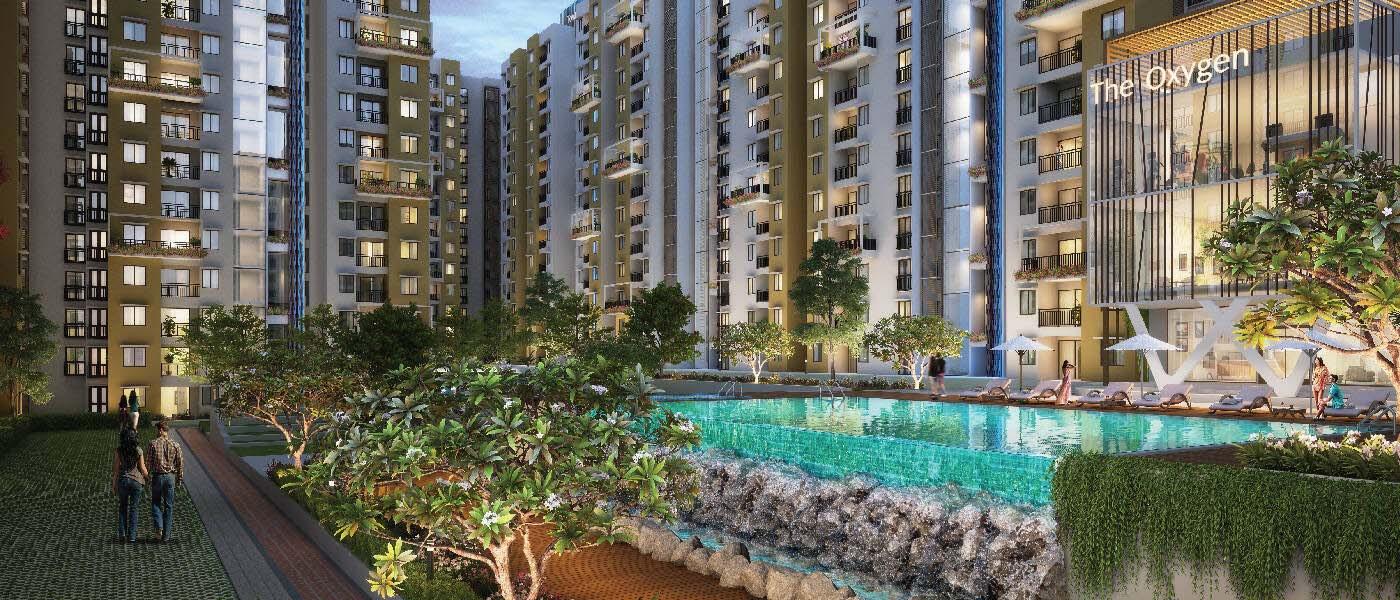
company had partnered with World Bank arm International Finance Corporation (IFC) for their projects. The most preferred kind of development that Puravankara is planning to prioritize in FY’ 24 will be in the size of around 1 million sq ft which can generate revenues of about Rs 1,200-1,750 crore, and is a highly profitable and rapidly executable model for the company.

SEASONAL MAGAZINE 38
NANI R CHOKSEY Vice-Chairman
Puravankara is increasingly becoming a name to reckon with in the commercial segment, and the company currently has 3 million sq ft under construction, which will be completed over the next 30 months in Bengaluru. Of these 0.9 million sq ft will be in the Kanakapura Road area and about 2.1 msf will be in the Airport Road.
Around one year back, in March 2022, Purva Asset Management, a subsidiary of Puravankara, had launched a Rs 750 crore Alternative Investment Fund (AIF) to invest in affordable housing projects and plotted developments across its projects in Bengaluru, Pune, Chennai, Hyderabad and the Mumbai Metropolitan Region.
This had come in handy for acquiring land in Chennai at a cost of Rs. 93 crore for plotted development with a potential of 1.3 msf. Now, the company is planning to invest Rs. 100 crore from this fund for further acquisitions in Bengaluru. Puravankara also has plans to raise around Rs. 1000 crore in capital during FY’ 24 to pare debt and shore up growth capital.
Even in the challenging sector of selling plots, Puravankara continues to demonstrate its skill and dominance in key markets like Bengaluru & Chennai. A recent example of this flair was in the sales of Purva Oakshire which saw sales of over Rs. 105 crore over the launch weekend.
The Purva Oakshire offers plots ranging between 1,000 and 4,500 sq. ft. and the project is located on Avalahalli Road, in Rampura, Bengaluru North. The launch event itself recorded 250+ walk-ins and 100+ Expressions of Interest, demonstrating the project’s exceptional value, as well as customer trust in brand Puravankara.
Spread across 35 acres, this Londoninspired plotted development is categorized into three prestigious neighbourhoods, namely Mayfair, Kensington, and Paddington, and has
AMANDA PURAVANKARA Executive Director, Provident Housing Ltd


more than 6 acres of open green spaces. There is also an elegant resort here, which offers more than 30 amenities, and the houses will be surrounded by a dazzling array of flora and fauna.
The design objective has been to weave in the regal ambience of Greater London into the contours of North Bengaluru. Customers made a beeline for Oakshire as it offered them a unique living experience that combines luxury, comfort, and convenience in a tranquil environment. Puravankara is committed to delivering a world-class
development here that will stand the test of time and become a true landmark in community living.
The Oakshire project offers easy access to the Bengaluru International Airport and is a 30 minute drive from Bengaluru hubs like Whitefield, MG Road and Hebbal making it a centrally located destination. The project has well-designed plots that cater to the diverse needs of homebuyers, like providing ample space to build a dream home that meets the expectations of every buyer. Oakshire has a starting price of Rs. 81 lakhs for a 1,000 sq ft plot.
SEASONAL MAGAZINE 39
TRUE INTERNATIONAL SCHOOLING FINALLY ARRIVES IN KOCHI
TRUE INTERNATIONAL SCHOOLING FINALLY ARRIVES IN KOCHI


Cochin International School has opened its doors recently for students to experience IB & Cambridge schooling in the city, with premium features including over 2 lakh sq ft of built-up area, 4 swimming pools, 15:1 student-facilitator ratio, smart classrooms, extensive indoor & outdoor sports facilities and all meals on the house! Veteran international educationalists including Oxford educated Richard Hillebrand, and JNU trained Karol Toth, would be heading the institution promoted by Trivandrum International School (TRINS) Group led by prominent NRI businessman George M Thomas and Sapnu George.

COCHIN INTERNATIONAL SCHOOL
SEASONAL MAGAZINE 40
Richard Hillebrand
When it comes to quality education, Kerala has always had great institutions. But the advent of the new millennium saw a redefining of what exactly is great quality in schooling, when Kerala’s first truly international school was opened in the state capital of Kerala.
Under the leadership of Kerala’s IT industry pioneer, Vijaya Raghavan, who was the Founding CEO of Trivandrum Technopark, the Trivandrum International School (TRINS) was established in 2003 and it swiftly became the benchmark to beat in the entire state. It was Kerala’s first school following the famed International Baccalaureate (IB) curriculum, as well as the most prominent Cambridge International School in Kerala following the IGCSE curriculum.
Twenty years later, the TRINS Group has once again proved that they continue to be the pioneers and leaders in delivering true international schooling in Kerala, by starting Cochin International School (COCHINS) in Pukkattupady, Kochi.
TRINS Group is led by its President, George M Thomas, who is a prominent NRI businessman in Oman and an educationalist par excellence, and its Executive Director, Sapnu George, who is professionally an architect with an eye for detail and a deep passion in caring for students.
George M Thomas has also been the founder of Asian School of Business, Trivandrum, and a chain of Early Learning Centres. George is currently the Group Chairman of Saif Al Harasi & Burj Oman LLC Group of companies that has been operating in the Sultanate of Oman for nearly three decades.

George was instrumental in nurturing several institutions in the area of infrastructure development, hospitality and learning. His infrastructure development firms have successfully managed several prestigious turnkey projects in the public and private sector, and is a leader in infrastructure projects in the Sultanate of Oman.
In 2019, under George’s leadership, the TRINS Group took over The Charter School in Kochi, which has now been transformed as Cochin International School (COCHINS). The fact that The Charter School, which began its operations in 2012, was created with facilities required for eventually being an IB School, made the task before TRINS Group less formidable.
COCHINS has hit the ground running now with formidable features including 2 lakh sq ft of built-up area, 15:1 studentfacilitator ratio, 4 swimming pools, all meals on the house, smart classrooms, performance hall, indoor & outdoor sports facilities and with in-campus boarding getting readied now.

And needless to say, COCHINS stands to gain immensely from the leadership and expertise of TRINS. Richard Hillebrand, Director of Academics at TRINS Group will also be leading the Group's IB School in Kochi. After graduating from Oxford University, Richard Hillebrand has had a chequered

career in teaching across schools in England, Sri Lanka & Jordan. In India, he was the Founding Principal of Trivandrum International School in 2003.
The Principal of Cochin International School is Karol Toth, who holds a Master’s Degree from JNU, and has spent almost two decades in India teaching at leading educational institutions, in both IB and Cambridge schools. Renowned as an engaging and innovative educator, Principal Karol Toth has always succeeded in inculcating a love of learning among his students and a strong camaraderie among his colleagues.
Remi C Rajan, IB-PYP Coordinator at COCHINS has eight years of experience as a PYP educator, including three years at Trivandrum International School. She is an inspiring and determined teacher who encourages each child to explore the world around them, and follows the principle that high expectations lead to high levels of achievement. She holds MPhil & MSc degrees, both in Computer Science.
Other leaders from TRINS Group who would be contributing to the success of COCHINS as mentors include Sanjay Prabhakaran, Head of IB Primary Years Programme, TRINS Group, who has experience in some of the top IB schools in India and is an IB evaluator. Sanjay embodies and implements the PYP philosophy with rigour.
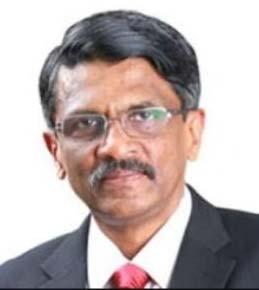
Yet another mentor to COCHINS from the TRINS Group is Rensy Oommen, who joined TRINS in 2004, soon after its inception as a teacher, and is currently the Head of the Primary Section. Rensy has successfully coordinated several outreach initiatives at TRINS.
 Mr. Karol Toth, Principal, Cochin International School
Mr. Vijaya Raghavan
Ms. Sapnu George, Executive Director
Mr. Karol Toth, Principal, Cochin International School
Mr. Vijaya Raghavan
Ms. Sapnu George, Executive Director
SEASONAL MAGAZINE 41
Mr. George M. Thomas, President
PROSPECTS UP FOR PRESTIGE AS HEADWINDS TURN TO TAILWINDS
What sets apart a leader in any sector is how it performs during downturns rather than in good times. The first three quarters of this fiscal delivered serious headwinds for the entire real estate sector, as it witnessed unprecedented rate hikes by Reserve Bank of India (RBI) in its bid to contain the inflation contagion that hit Indian shores too due to the Russian invasion of Ukraine. But a sector leader like Prestige Estates Projects faced these headwinds with considerable strength, which is readily seen from its H1 (Q1+Q2) results as well as the ongoing sales momentum in Q3 & Q4. The Bengaluru
headquartered developer which had guided for Rs. 12,000 crore of pre-sales for this current fiscal, could surpass more than halfway of thisRs. 6500 crore - by the end of H1 itself. The listed developer has done extremely well in both its residential and office / commercial segments. This helped the developer report an 80% surge in its consolidated net profit at Rs 140.7 crore in Q2 of this fiscal year, on a year-on-year basis. Total income rose to Rs 1,474.7 crore in the second quarter of this fiscal year from Rs 1,345.2 crore in the corresponding period of the previous year. Sales bookings during Q2 rose 66% yearon-year to Rs 3,511 crore on higher demand despite a rise in home loan interest rates. For the full half year of this fiscal or H1, Prestige Estates’ sales bookings more than doubled to

REALTY SEASONAL MAGAZINE 42
Rs 6,523.1 crore from Rs 2,845.9 crore in the corresponding period of the previous year. The developer sold 3,210 units during the second quarter, translating to 36 Prestige homes sold every day on an average basis. Total sales during H1 was 8.18 million square feet with an average realization of Rs 7,976 per square feet. In its core and traditional market of Bengaluru, its presales was largely led by the sprawling Prestige City project so far, and going forward, Prestige has a pipeline of 25 million sq ft of upcoming launches to keep the residential momentum in high gear, of which around half is from nonBengaluru markets like Mumbai, NCR-Delhi, Hyderabad, Chennai, Pune and smaller markets like Kochi and Calicut. It also has Rs 6,500 crore of inventory in ongoing projects to rely upon in Q4 and beyond. Earlier, in FY’22, Prestige had reported sales bookings of Rs 10,400 crore, thereby becoming the first real
estate company to breach Rs 10,000 crore pre-sales mark in the country. Despite its entry into the Mumbai market only a couple of years back, Prestige was among the top sellers in the central suburb of Mulund with sales worth Rs 883 crore in 2022. Prestige Estate’s commercial portfolio is also doing extremely well, and it is most bullish on Mumbai from where it expects around 50% of its overall rentals to come from by the next few years. Prestige has three office towers, spread over 10 million square feet coming up in the core Mumbai business district of Bandra Kurla Complex, as well as upcoming office towers in Pune, Hyderabad, and Kochi too. But the bigger story from Prestige is that the company has performed well during the recent headwinds, and that these headwinds are now all set to subside with inflation easing and rate hikes getting paused or even reversed soon. This will deliver significant tailwinds for the company in Q4 and beyond.

SEASONAL MAGAZINE 43
FY’22 had gone down in India’s real estate sector, with a unique change in the pecking order. Noted Bengaluru headquartered developer, Prestige Estates Projects had zoomed past sector leaders DLF, Macrotech (Lodha) & Godrej Properties by way of sales booking in the last quarter of FY ’22. If anyone thought it was a one-off or anomaly, Prestige has proved that they are wrong, in Q1 of this fiscal. Despite the significant headwinds by way of the 140 bps interest rate hikes, and unprecedented cost escalations, Prestige has shown significant momentum with Q1 sales booking jumping 310% on a year-onyear basis to over Rs 3000 crore. The overall momentum was striking as it translated to Prestige selling almost 28 homes every day of Q1, with a total of 3.63 million sq ft spanning 2560 units at an average pricing of Rs. 8500 per sq ft. Prestige seems to have clearly benefited from the market’s consolidation to the more organized and credible players post RERA implementation in the country. For Chairman & Managing Director, Irfan Razack, the emergence of Prestige into national leadership and international limelight is a matter of vision fulfilled as he has always guided the listed developer to be highest in quality and ambition, but lowest in noise. A bigger story in Prestige Estates Projects is that it is targeting to sell properties worth at least Rs 12,000 crore this fiscal, up 16% annually, with 8,500 crore coming from its core market of Bengaluru and the rest from other
cities such as Mumbai and Hyderabad. Already, around Rs 750 crore of sales bookings in Q1 had come in from its new market of Mumbai. To achieve such high growth Prestige has plans to launch multiple projects, having close to about 15 million square feet of area, in the upcoming quarters of this fiscal year, apart from selling its inventories in the ongoing projects. Close on heels of its success in Mumbai, Prestige is also planning to launch a project in the Noida market this fiscal. When it comes to capital markets, there is nothing like being a leader. From TCS to Asian Paints and from Reliance to HDFC Bank, it is a winner-takes-it-all market. Eyes of the foreign and domestic institutional investors, who basically drive the Indian equity market, are forever focused on the longstanding sector leaders, and on emerging leaders if any. That is why Prestige Estates Projects is in international limelight right now, after their FY’22 numbers were published. For, in this past fiscal, Prestige has stunned most industry watchers to emerge as the largest developer in India in terms of sales booking, ahead of traditional sector leaders including DLF, Macrotech (Lodha) & Godrej Properties. If you are stock savvy, you will now be eager to know the market cap of Prestige vis-a-vis these peers, and the answer is it is way too lowonly 46% of Godrej, 34% of Macrotech and 22% of DLF. Yes, by now, you will be able to guess where Prestige is headed, and that is only one reason why Prestige Estates is in international limelight right now!
When the Q4 and annual numbers of India’s top four listed developers came in, there were many interesting trends to detect. For one, all were in serious sales upswings. But Prestige squarely beat all the other three - DLF, Lodha & Godrej - in absolute sales bookings during the past fiscal, and also on percentage terms, except for DLF.
Against Lodha’s sales bookings of Rs. 9024 crore, DLF’s Rs. 7273 crore, and Godrej’s Rs. 7861 crore, Prestige recorded a sales booking of Rs. 10,382
crore, beating them all by a wide margin. Needless to say, it is Prestige’s largest sales booking ever too. In percentage terms, while Lodha witnessed a 51% growth in sales bookings and Godrej saw a 17% growth, Prestige grew by 90%, second only to DLF’s 135% growth which was however from a low base last year. There was more to this performance by Prestige than which meets the eye. Firstly, all the other three developers were headquartered in either Mumbai or in Delhi-NCR, and their primary development activities concentrated in these two regions, which are the most expensive two realty markets in India. In contrast, Prestige is headquartered in Bengaluru, with its primary developments there, and has only recently entered Mumbai and NCRDelhi, which means its highest-value sales are yet to kick in, on a massive scale!
And when it comes to market capitalization, Prestige is much smaller than these three peers that it decisively overtook in sales bookings! And when you go into the internals of this market-cap riddle, you realize that it is indeed a matter of lower valuation, with Prestige’s Trailing Twelve Months (TTM) Price/Earnings (P/E) multiple being at just 15 times, as against 53 times accorded to DLF, 46 times to Lodha and 105 times given to Godrej! Now, with Prestige emerging as the sales leader, expect a big shakeout in the realty sector valuations!
No wonder then that international heavyweights like Morgan Stanley and JP Morgan are both having ‘Overweight’ stance on the Prestige stock with targets of Rs. 612 and Rs. 635 respectively as against the scrip’s price of around Rs. 425 now.
One reason why Prestige has been able to do quite well in FY’22 is its unwavering focus so far on the Bengaluru market. The Silicon Valley of India performed quite well in Q4 of FY’22, both in terms of housing sales and new launches. As per ANAROCK Research, Bengaluru saw housing sales of nearly 13,450 units

SEASONAL MAGAZINE 44
in this quarter, which is an yearly growth of over 55%, while new launches stood at 13,210 units, an increase of 72%.

As the de facto leader of Bengaluru, Prestige reaped rich dividends from this post pandemic trend. There was robust demand for its sprawling Prestige City project in Bengaluru as well as for its new launches in Hyderabad and elsewhere in the country. But the future game changer for Prestige is expected to be its recent foray into India’s economic capital of Mumbai, and arguably the country’s most expensive realty market.
Prestige had launched its first residential projects in Mumbai Metropolitan Region (MMR), including Prestige City at Mulund, Prestige Daffodils at Pali Hill, and Prestige Jasdan Classic at Central Mumbai. The response to these three projects at the launch event itself has been extremely good, attesting to the well-thought of nature of these offerings. Prestige has a stated aim of achieving Rs. 3,000 crore in annual sales from these and upcoming MMR projects.
Total launches by Prestige in FY22 stood at 16.77 million square feet. For this ongoing financial year, the company has set a sales guidance of more than Rs. 10,000 crore, which it expects to achieve through a strong pipeline of projects in Bengaluru and other markets like Mumbai. Going forward, more than 50% of the new launches are slated outside of its core Bengaluru market.
Prestige has long been pursuing a goal of debt reduction, and it has a stated objective of maintaining net debt/equity ratio at around 0.5x in the medium term. In Q4 of FY’22, the success of this plan was visible with its net debt to equity ratio standing at 0.35x. Net debt fell sequentially or QoQ from Rs. 4,170 crore in Q3 of FY’22 to Rs. 3,360 crore in Q4 of FY’22. The company has achieved this through some extraordinary and well-structured deals during the last two years.
In 2021, Prestige had announced the sale of some of its commercial and residential assets in two phases to the US based Blackstone Group, for reducing its debt. The deal had a total enterprise value of around Rs. 9,160 crore. The second phase of the Blackstone deal has also concluded in FY’22, with the remaining payment of Rs. 250 crore to Prestige expected soon.
During the last three years, Prestige has been witnessing a dramatic period of turnaround. Under Chairman & Managing Director Irfan Razack’s visionary leadership, FY’21 saw Prestige’s profits and RoE nearly tripling, and debt-to-equity diving to one-third of the previous year thanks to the $1.5 billion Blackstone deal.
Unlike many of its southern peers, Prestige has a significant portfolio under lease. Prestige has 29 million sq ft of office space and 5 million sq ft of retail space in various stages of implementation now. The residential sales and commercial leasing activity act as twin engines of growth for Prestige, and are complementary in nature. While sales momentum in the residential segment generates free cash, timely execution in the leasing segment contributes to the further value generation.
Prestige also enjoys significant pricing power in the market, and this has come in handy during this inflationary period that has driven up input and construction costs. To offset this, Prestige has raised prices recently. But what really matters for Prestige now is the impressive diversifications it is undertaking in warehousing, hospitality, retail and its impressive geographic diversification into Mumbai.
One huge advantage a brand like Prestige Estates holds in India’s realty market is that, having made a name for itself in high quality residential and commercial projects, it can extend that expertise and goodwill to new buzzing segments as they emerge. The firm had some time back made such a silent foray into large Grade A warehouses. For testing the waters, it built two such warehouses in a 15 acre land it held in Malur near Bengaluru.
As in every Prestige project, keen attention went into every detail, especially as it was a learning experience for the company too, as it was doing Grade A warehouses for the first time. But it came out with flying colours with one of the buildings attracting e-com major Flipkart as the tenant and the other being taken by
SEASONAL MAGAZINE 45
Dhoot Transmission.
Now, having proved itself in this domain with such a pilot project, Prestige Estates is going all out to develop this domain, especially as there is a huge demand from ecommerce companies like Flipkart, Amazon, and several of their smaller peers. Towards this, the company has acquired multiple land parcels in and around Bengaluru as a first step. Being a Bengaluru headquartered developer, the company has unparalleled expertise in the city, and the city being the e-commerce hub of India also augurs well for it. Later on, Prestige plans to take this vertical to other regions of the country too. But unlike some of its peers, it is not making a big splash for attracting investors at this stage, despite the warehousing sector attracting $900 million investments in 2021 alone.
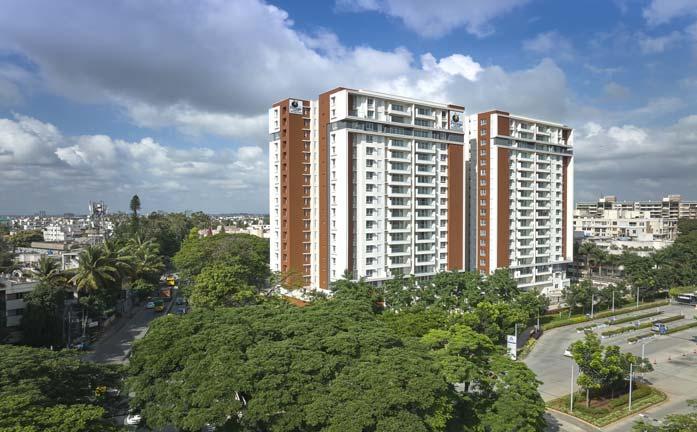
Like in everything it does, Prestige wants to differentiate itself in this sector with premium offerings, and it also wants to undertake significant growth and value addition in this vertical, before considering to onboard investors into this. This has been a strategy it did quite successfully in its retail & office space vertical, as seen in the Blackstone deal.
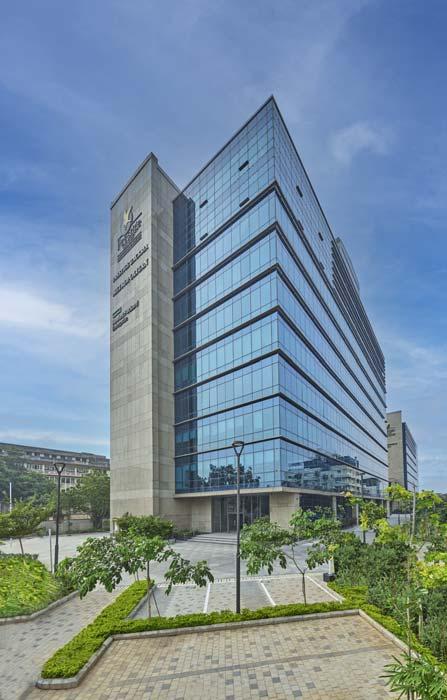
In Grade A warehousing, it is eyeing a unique opportunity, as large organized players like itself with expertise in everything from conceptualization to land acquisition to design to execution to leasing, is
rare in this field. That is why Prestige is confident of differentiating its upcoming warehouses from the rest of the pack. By investing significant funds into this vertical on its own, Prestige wants to build one of the largest Grade A warehousing portfolios in the country.
With its foray into warehousing, Prestige is also closing a gap in its portfolio in retail. Already, it was a noted player in brick n’ mortar retailing, having developed several malls and running them too. Even though it sold off significant retail properties to Blackstone, it remains bullish on physical retailing as it believes that going forward retailing will follow a hybrid model of e-com and brick n’ mortar.
This can be seen from the changing strategies of e-com companies like Flipkart, Amazon, Jiomart etc, all of whom are planning to leverage the tens of thousands of multi-brand and single-brand physical stores owned by individual retailers in malls and high streets for wider reach and rapid delivery to their growing customer base. This means significantly more business for such shops and malls, and Prestige is gearing up for this future with two new malls under construction and six more malls in the planning stage. When these are complete, Prestige will have double the retail properties compared to the retail assets it sold to Blackstone last year.
With large IT and ITES players starting to bring back their huge workforces back to their offices, Prestige is also eyeing an uptick in the demand for office space. Sensing the green shoots of recovery in office space demand, it is building several such office space projects in multiple cities including India’s economic capital of Mumbai. Another segment that is witnessing a renewed surge post the pandemic is revenge travel, among both business and leisure travellers, and hospitality properties stand to gain the best benefits out of this. Prestige, which already has a strong foothold in hospitality, is all set to cement it further by a major tie-up with US hospitality major Marriott International for two new hospitality projects in New Delhi. Prestige and its 50:50 joint venture partner DB Realty will develop two Marriott hotels and a convention centre in a 7.7 acre land in Aerocity.
The two projects - New Delhi Marriott Marquis & Convention Centre and The St. Regis Aerocity – are unique in the Indian market. While the former will be the first Marriott Marquis & Convention Centre in India, the latter will be a tribute to Marriot’s flagship
SEASONAL MAGAZINE 46
hotel in US, The St. Regis New York, and will feature its renowned New York Deli. Together these two properties will bring 779 rooms to the New Delhi hospitality market, and 85,000 sq ft of premium meeting spaces. For the convenience of business and leisure travellers visiting and staying in New Delhi, the two properties are coming up quite near to Indira Gandhi International Airport. And it is not only expansion into such buzzing verticals that Prestige is handling currently. It is in the midst of doing what is historically its greatest expansion ever – a geographic expansion – into Mumbai, arguably the hottest property market in the country for long.
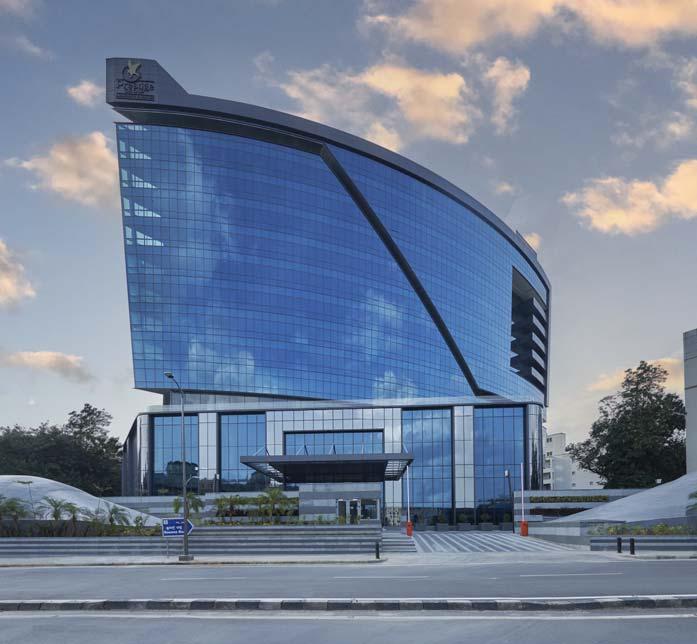
Traditionally, most non Mumbai based developers have however not fared well in the city which is home to stock market titans and Bollywood celebrities, due to multiple reasons. One factor has been the exorbitant cost of land, which has resulted in either super expensive apartments that few developers can market effectively, or the super small apartments for the masses which witness intense competition between almost all kinds of developers. Into such a scenario has Prestige entered boldly with some unique projects.
Prestige’s very first project in Mumbai, Jasdan Classic in Central Mumbai speaks volumes about their strategy for the city. Even when some of the largest Mumbai based developers prefer far away suburbs for premium projects, Prestige has chosen an inside city land at Byculla West for this flagship project. Jasdan Classic consists of two skyscrapers with 233 ultra luxury homes. They are relatively large sized apartments with configurations of 2,3,4-BHK and priced between Rs. 3.69 crore and Rs. 9.44 crore.
Jasdan Classic is spread over 2.2 acres of land, with each tower of 45 storeys. Nine levels of podium parking, three levels of clubhouse and plush amenities like an infinity swimming pool, gym, spa, squash court, & multipurpose hall are available inside the
sprawling project.
All the apartments here are designed in spacious layouts with ultra-modern living areas, large windows for cross ventilation and balconies featuring breath-taking views of the South Mumbai cityscape. The Arabian Sea on the West and the Eastern Harbor on the East sets the perfect tone of style and class for the prospective homebuyers here.
The message from Prestige is loud and clear – they are not compromising on location, or space offered or on ultrapremium amenities. While marketing such a project is a tough call for many developers, Prestige is confident of handling it comfortably, and besides that, since there are only 233 homes to sell, this flagship project from Prestige is likely to be a sure and steady sell-out.
The selection of a hot and expensive location like Byculla West in Central Mumbai for their flagship project, is not a one off strategy either. Upcoming residential projects from Prestige in Mumbai would be at similar hot locations like Pali Hill at Bandra and Marine Lines. Prestige has
boldly entered such super premium micromarkets, with a keen insight that for a change many high net worth families would prefer luxury homes in such prime locations rather than in the outskirts or suburbs of the city. That is, if such projects were available. For long now, such homes from tier 1 branded developers were rare. In its upcoming commercial developments in Mumbai too, Prestige wants to develop in the best addresses, like it has always done in Bengaluru. This has led to it choosing land parcels in prime locations like Mahalaxmi and Bandra Kurla Complex for its first two commercial projects in the city.
However, this doesn’t mean that Prestige would be shying away from the other end of the housing spectrum in Mumbai, the relatively affordable segment. The listed developer has carefully chosen the buzzing suburb of Mulund for its foray into this segment. Interestingly, this is its largest land parcel so far in Mumbai, and given the intense competition there among most of the large players, expect Prestige to offer a significantly differentiated range of homes.
SEASONAL MAGAZINE 47
15 High Impact
15 High Impact
15 High Impact
tives Under tives Under tives Under tives Under tives Under
Ja Chief Minister Ja Chief Minister Ja Chief Minister Ja Chief Minister Ja gan gan gan gan gan
Chief Minister
1) The foundation stone of YSR Steel Corporation Ltd has been laid, which will be an enterprise to manufacture high-grade steel products with a capacity of up to 3.3 million metric tonnes per annum (MTPA). It will take advantage of its closeness to major auto and industrial hubs, proximity to raw material sources, and connectivity by road, rail, sea, and air. It will drive the region’s growth by providing direct and indirect employment opportunities for over 25,000 people.


2 ) Since steel making is a CO2 emission intensive process, new technologies like Hydrogen are in the process of consideration in the commercial operations in the state. Government will actively support the technology providers to develop and establish the low carbon steel making in the state. Government also is actively pursuing the natural gas pipeline projects of the state, which will enable the steel industry to adopt
the latest technologies and reduce the carbon footprint.
3) Since Andhra Pradesh ranks high in production of grains such as Rice and Maize,the governmentis pushing for the production of ethanol in the state and towards this has identified Ethanol Manufacturing as one of the priority sectors. The Government of Andhra Pradesh intends to provide best-in-class support for ethanol production including an Ethanol Production Policy and this will provide vast employment to local, women and skilled workers.
4 ) The government of Andhra Pradesh is now placing significant thrust on the adoption of sustainable green measures across industries in the state. Common facilities like Waste water treatment, Continuous Emission Monitoring System (CEMS) etc. would be setup in new APIIC Industrial parks.
Initia
Initia
Initia
15 High Impact Initia 15 High Impact
15 High Impact
15 High Impact
Initia
Initia
5) The Andhra government is setting up 26 secondary food processing units, one in each parliamentary constituency, with an investment of Rs.3500 Cr, holding potential to create direct employment to 10,000 Initia
15 High Impact Initia 15 High Impact Initia 15 High Impact
STATE SEASONAL MAGAZINE 48
Initia tives Under tives Under tives Under tives Under tives Under Chief Minister Chief Minister Chief Minister Chief Minister Chief Minister Ja Ja Ja Ja Ja gan gan gan gan gan
people and indirect employment to 23,000 people.
6) The government is developing 9 new fishing harbors in two phases with an outlay of approx. Rs 4,000 Cr of investment. These facilities will benefit 60,000 fishermen directly and will create additional employment of 35,000 from allied activities such as ice plants, cold storages, preprocessing, fish transport, marketing which will be operationalized by 2023-24 in a phased manner.
7) The AP Government is planning to develop Andhra Pradesh into a logistics hub not only for India but also targeting the entire South Asia, just like how the city-state of Singapore, has emerged as a logistics hub due to its favorable policy structure, use of IT, skilled manpower and standards for logistics and warehousing.

8) Airports are given special thrust inAP and the current developments are greenfield airports at Bhogapuram Visakhapatnam / Vizianagaram and Dagadharti at Nellore on PPP model. The Uyyalawada Narasimha Reddy Kurnool Airport has already been developed and inaugurated. Also being planned is an Aerotropolis where infrastructure, land use, and economy are centered on an airport and necessary studies at now being undertaken for the Kurnool Airport, to cater to the technical infrastructure needs of the Orvakallu Mega Industrial Hub region.
9) A Dedicated Freight Corridor of 1,080 kms between Vijayawada –Kharagpur section will provide connectivity to Visakhapatnam, Gangavaram, Kakinada, Krishnapatnam and Machilipatnam
ports in Andhra Pradesh, ensuring faster movement of goods and capacity enhancement in the oversaturated sections of the railway network. Another 890 rkm (Route Kilometer) North South sub-corridor Vijayawada- Vijayawada-NagpurItarsi (Madhya Pradesh) route.
10) Under CM Jagan, the state has also been ranked as the top state in the country for the ‘Ease of Doing Business’ by the Government of India, offering a robust industrial infrastructure, first-class connectivity and skilled workforce, making it a globally competitive investment destination.
11 ) A multi-faceted business enablement centre, christened as “YSR AP One” is being developed which will be a one stop shop offering business/ and investor support services.
12) Unlike under earlier regimes, the Jagan government has organized an unprecedented number of industrial interactions, that include over 200+ CEO, Embassy, and In-bound delegation interactions, 50+ Sectorspecific roadshows and 15 Ministerialled national and international investment roadshows since 2019-20, including a highly successful one in Dubai during Dubai Expo 2020.
13) Exports are faring well under the Jagan government, with total exports from Andhra Pradesh in 202122 being Rs. 1,57,398 Cr ($ 19 Bn USD) with a growth rate of 13% CAGR during the last three years. The major exports from the State are Drugs & Pharmaceuticals, Marine products, Agriculture produce, and Agro- based products, Handicrafts, and Engineering products.
14) AP’s new industrial policy by the Jagan government is a major pull towards the state. The core theme of the industrial policy of Andhra Pradesh is to provide support to industries across the business value chain – from approvals to setup & going beyond setup, supporting operations & scaling up. We would like to mention some salient features of the policy :
15) AP’s MSME ReStart Package has been a big breakthrough in the sector with its release of industrial incentives for revival. This was done factoring the hardships faced by the MSMEs during the Covid-19 pandemic. The Rs 962.42 Crore ‘ReSTART’ Package in May 2020 had helped about 8,000 MSMEs to restart their operations.
SEASONAL MAGAZINE 49
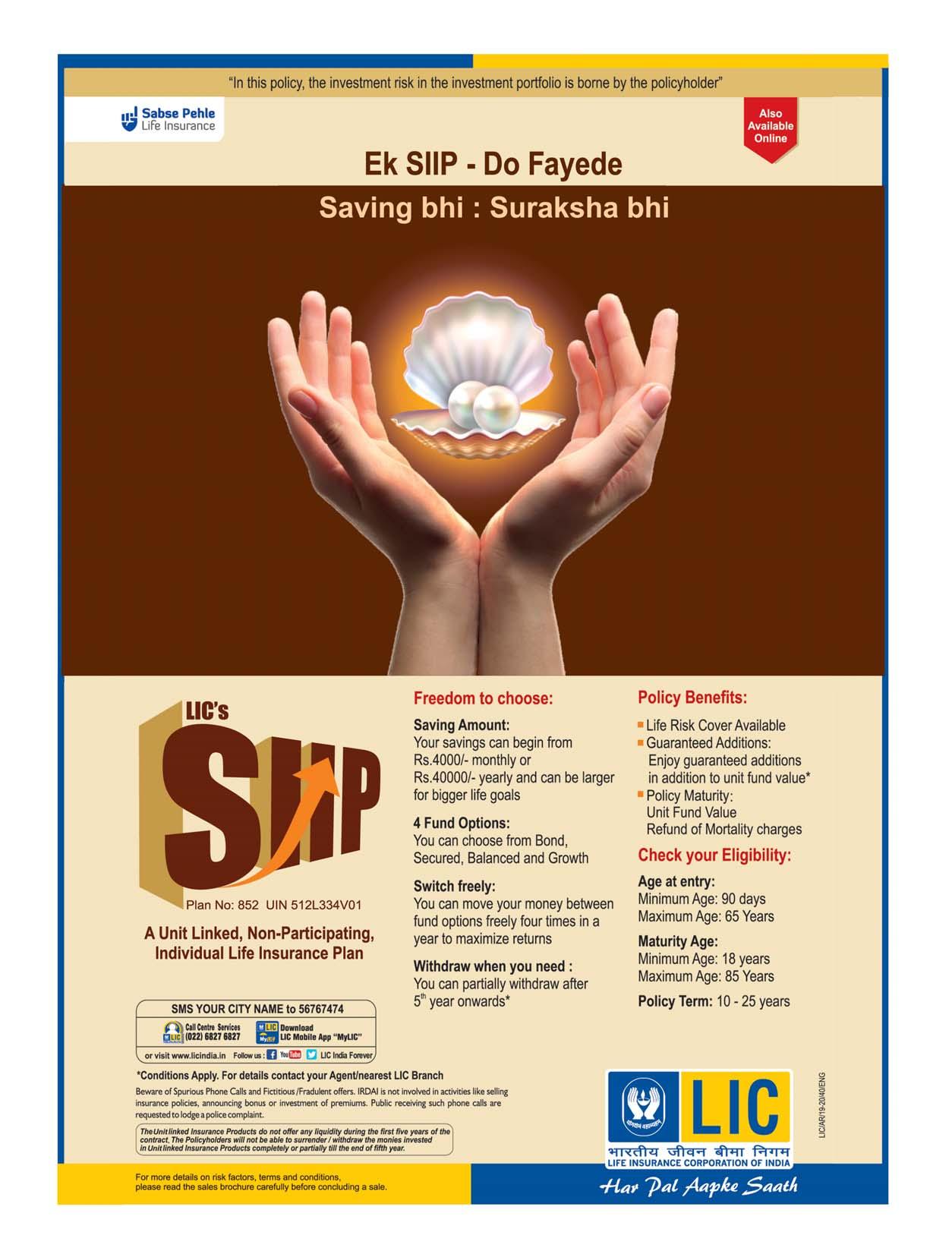




















































 Dr Katie Mack
Dr Katie Mack




































 Mr. Karol Toth, Principal, Cochin International School
Mr. Vijaya Raghavan
Ms. Sapnu George, Executive Director
Mr. Karol Toth, Principal, Cochin International School
Mr. Vijaya Raghavan
Ms. Sapnu George, Executive Director










